Introduction
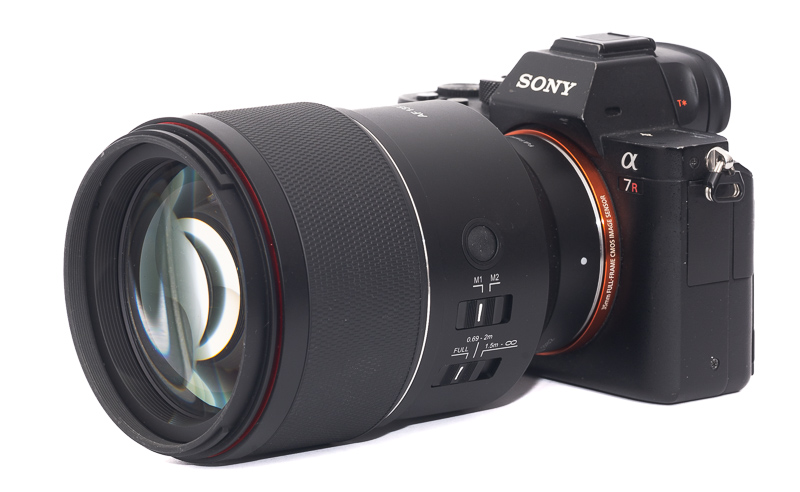
I wasn’t a big fan of most of Samyang’s earlier lenses, especially not their early autofocus lenses. Their latest lenses have shown significant improvements over the earlier ones though and this Samyang 135mm 1.8 AF FE even features a unique selling point: it is the lightest 135mm 1.8 lens ever made. And not only that, it is currently also the cheapest option. Do cheap and lightweight go together with good here? Let’s find out in this review.
Sample Images
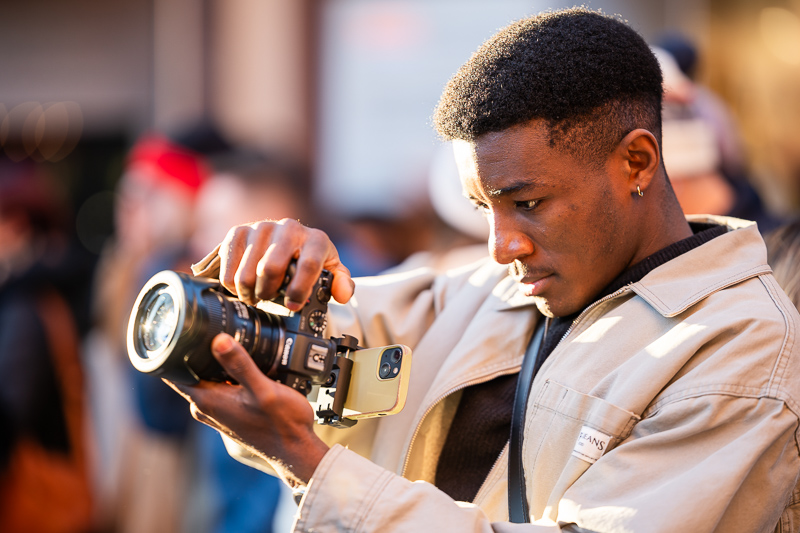
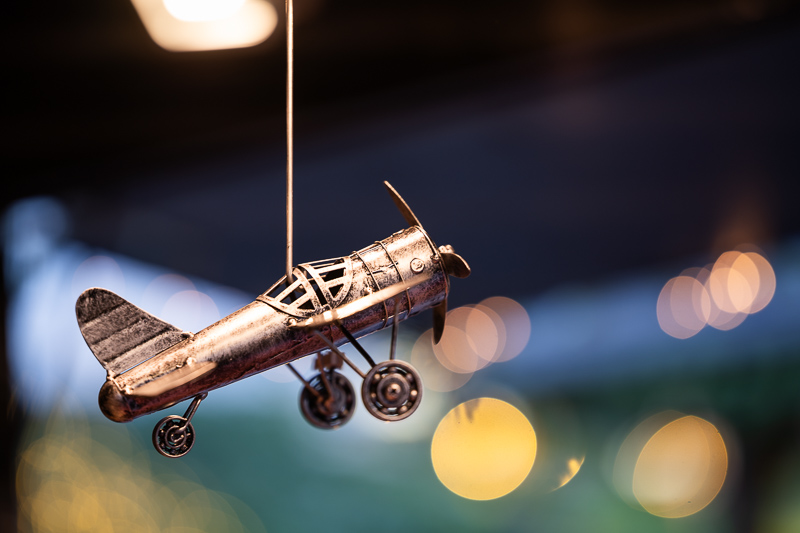

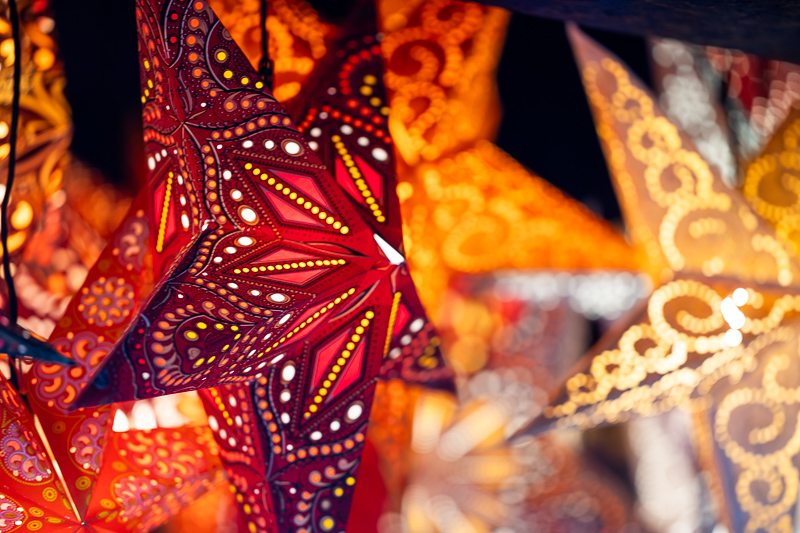
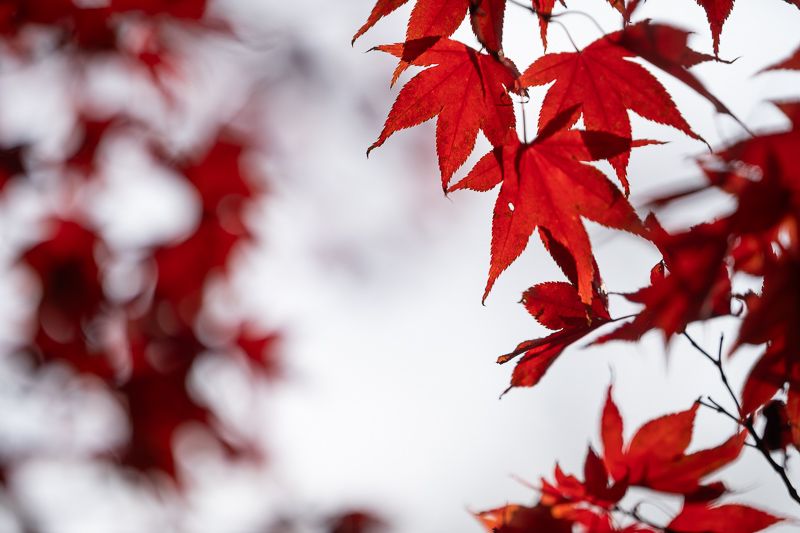
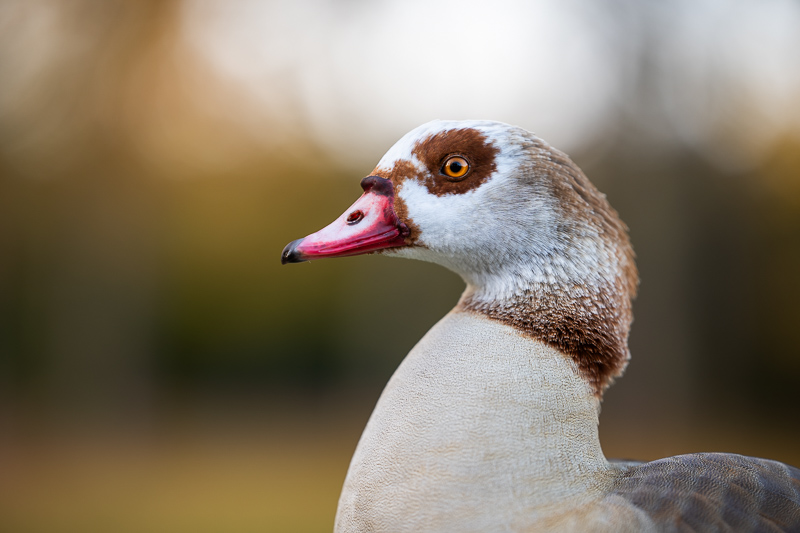
You can find many of the sample images in full resolution here.
Contents
Specifications
The Samyang 135mm 1.8 AF FE has the following specifications:
-
- Diameter: 93 mm
- Field of view: 18.9° (diagonally)
- Length: 130 mm
- Weight: 773g (without hood [90g], without caps)
- Filter Diameter: 82 mm
- Number of Aperture Blades: 11 (rounded)
- Elements/Groups: 13/11
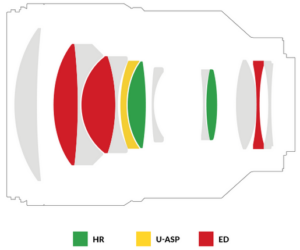
- Close Focusing Distance: 0.69 m
- Maximum Magnification: 1:4.0 (measured)
- Mount: Sony E
buy from amazon.com | amazon.de | ebay.com | ebay.de | B&H (affiliate links) for $799
Disclosure
This Samyang 135mm 1.8 AF FE was kindly provided by our reader Olaf Leismann for review purposes. Thanks a lot!
Handling/Build quality
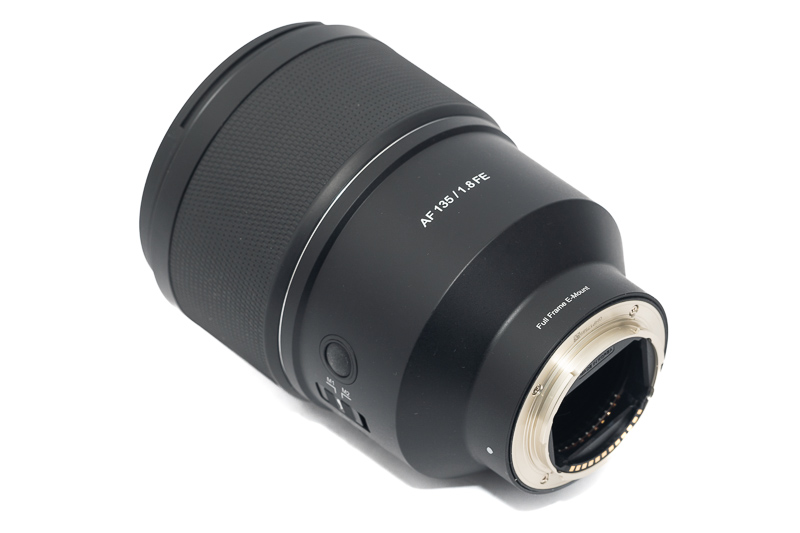
The Samyang 135mm 1.8 AF features a huge rubberized focus ring. The coupling is not perfectly linear though, if you turn it at “normal” speed it will take 180 to 270° from the minimum focus distance to infinity.
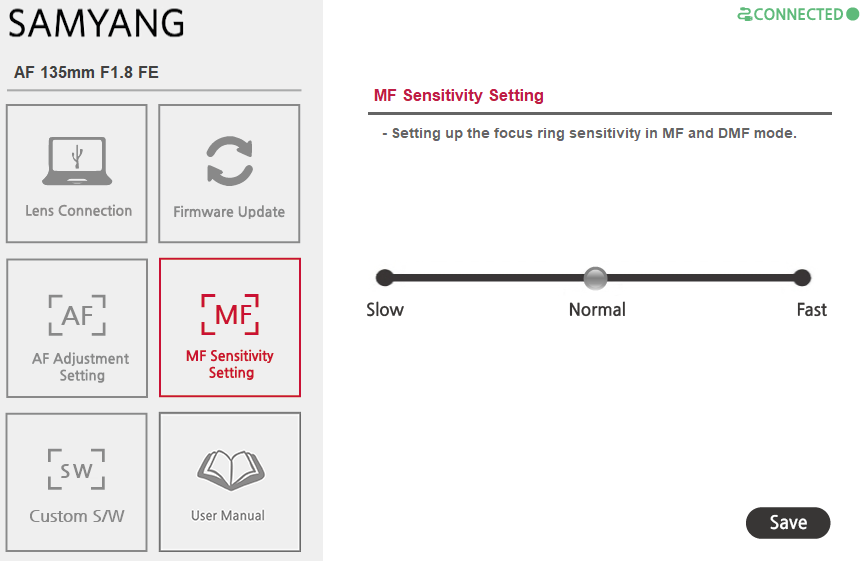
With the help of a Samyang lens station you can change the focus throw, if you set it to “fast” it will take around 90 to 120°.
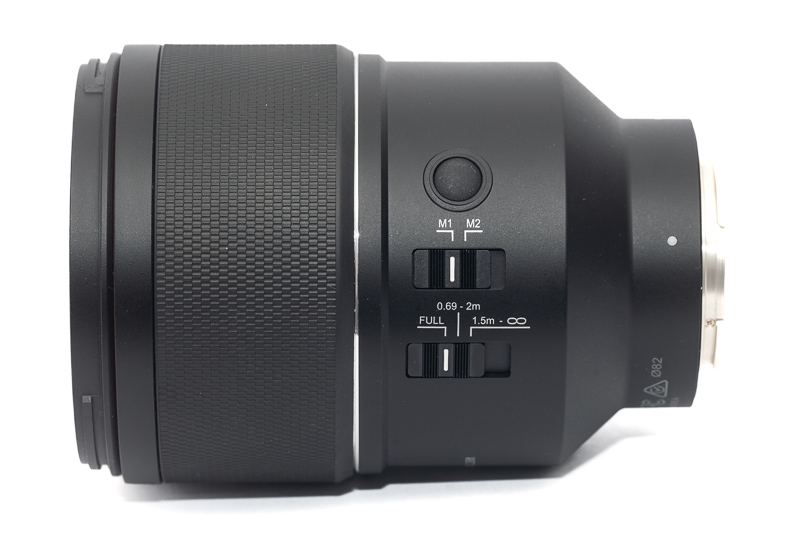
On the side of the lens with have a button and a lever that can be programmed if you are in posession of a Samyang lens station.
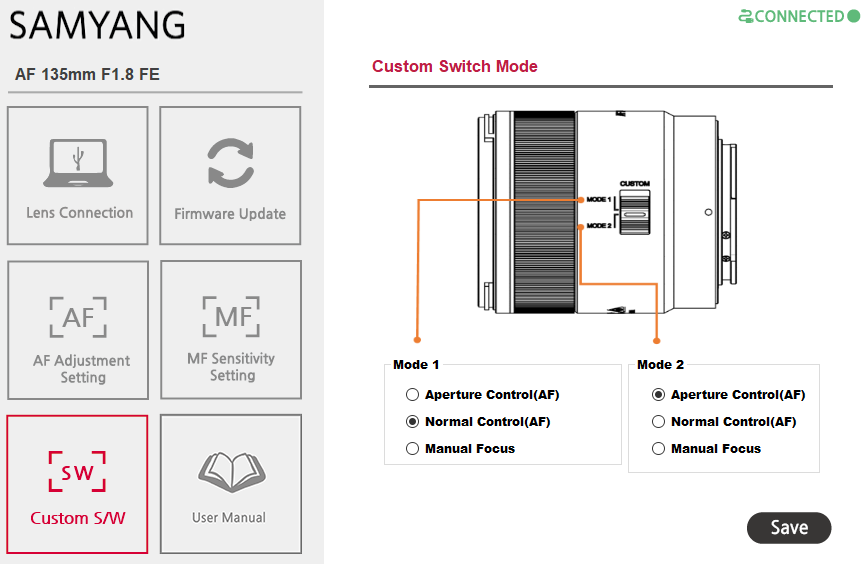
The obvious choice for me would be to programme it as an AF/MF switch, but you can also use it to make the focus ring behave like a clickless aperture ring.
Unlike the Viltrox 135mm 1.8 LAB and the Sony FE 135mm 1.8 GM this Samyanf does not feature a dedicated aperture ring.
There is also a focus limiter included. Personally I never use those, but if you are only working in a certain distance range they can come in handy to speed up the auto focus.
The outer casing seems to be made from a high quality polycarbonate and all markings on the lens barrel are engraved and filled with paint. Compared to earlier Samyang lens, this one sure looks and feels nicer, especially the focus ring’s texture.
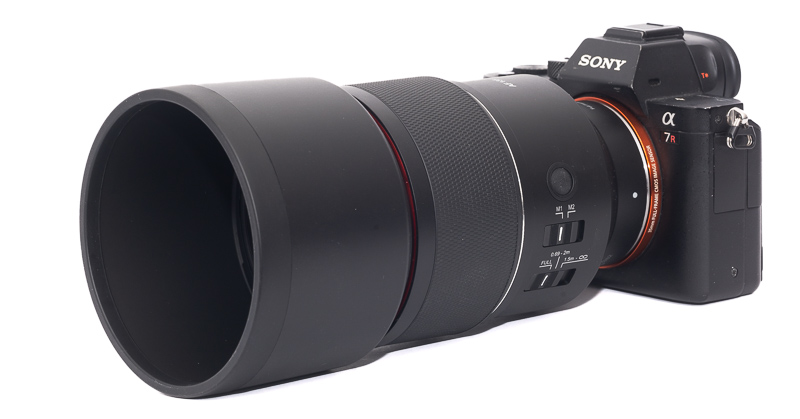
A bayonet style lens hood is also included. It features a rubber bumper at the front but no felt on the inside. It can be mounted reversed for transport.
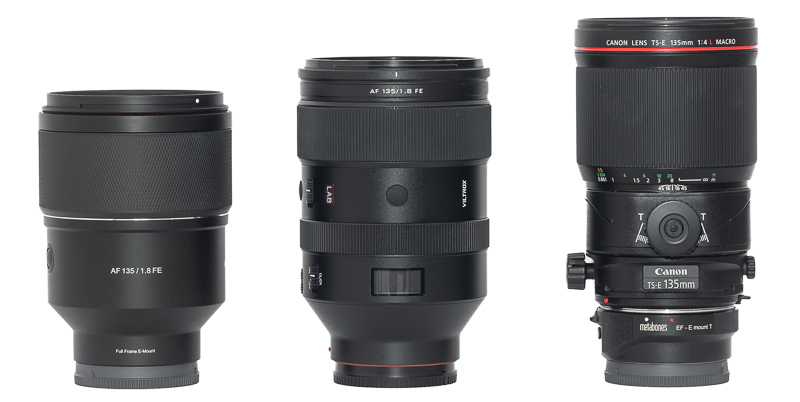
The Samyang 135mm 1.8 AF FE is the lightest of the modern 135mm 1.8 AF lenses and seeing it next to the bulky Viltrox 135mm 1.8 LAB the difference is quite obvious. The Sony FE 135mm 1.8 GM sits inbetween the two in terms of size and weight.
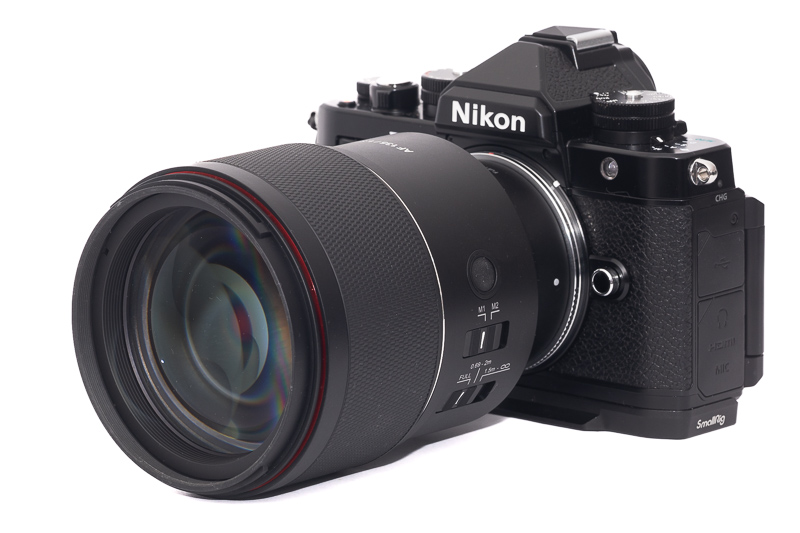
I tried this lens with the Megadap ETZ21 adapter as well as the Neewer ETZ adapter on a Nikon Z camera and everything (AF-C, AF-S, aperture setting, stabilisation, Exif) seemed to work fine. I did not try all the AF/camera settings though (as that is near impossible), so you may still encounter something that doesn’t work as intended.
AF performance
I am not shooting sports or fast moving animals/humans so if you want to know if the lens is fast enough for this, or how it compares to other lenses in this segment, you may have to look for a different review with a more detailed assessment of this aspect.
Generally the AF worked well, but it neither felt as fast nor as reliable as that of the latest first party lenses. There has since been a firmware update that might have further improved the AF performance.
Vignetting
light falloff
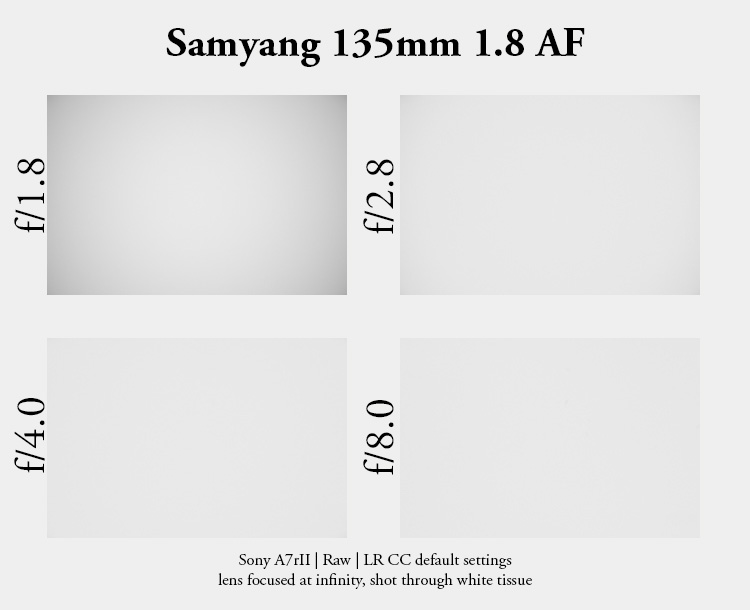
| f/1.8 | 1.7 EV |
| f/2.8 | 0.7 EV |
| f/4.0 | 0.2 EV |
| f/5.6- f/16 | 0.1 EV |
The vignetting figures are very typical for a fast 135mm lens. At shared apertures they are pretty much the same as those of the Viltrox 135mm 1.8 LAB, Sony FE 135mm 1.8 GM or the Canon EF 135mm 2.0L USM.
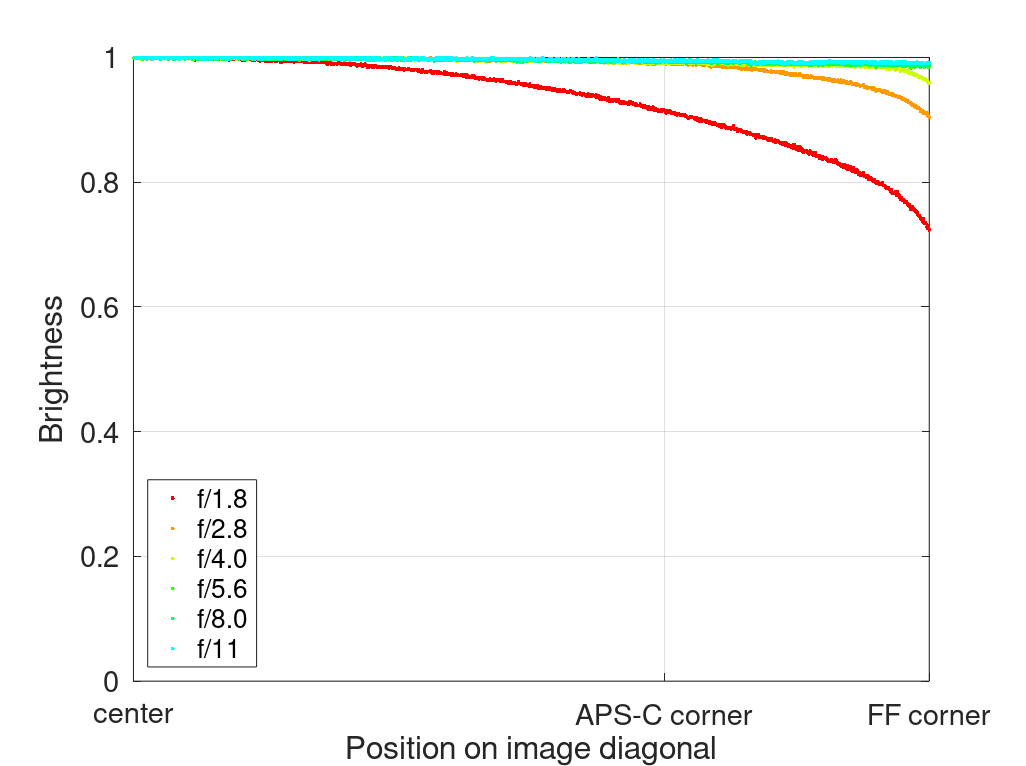
It is recommended to have a look at this article first to get an idea how this brightness graph works.
optical vignetting
Fast lenses usually show a noticeable amount of optical vignetting. Without going too much into technical details optical vignetting leads to the truncation of light circles towards the borders of the frame.
In the center of the frame almost every lens will render a perfect circle, but only lenses with very low optical vignetting will keep this shape in the corners.
So in the following comparison we move from the center (left) to the extreme corner (right) and see how the shape of the light circle changes.
I was curious how the compact and lightweight Samyang compares to the Viltrox 135mm 1.8 LAB in this category. I was actually expecting this Samyang to show stornger optical vignetting and that is indeed the case. The differences in this category are not nearly as huge, as the differences in terms of size and weight suggest though.
The Samyang 135mm 1.8 AF FE does make use of an aspherical element, but I don’t see any onion ring structures here.
Sharpness
MTF-Graphs
According to these graphs, at infinity we should expect very good performance at f/1.8 with only a small drop in resolution in the corners and absolutely impeccable performance stopped down. Comparing these graphs to those of the Viltrox 135mm 1.8 LAB, the Samyang should actually perform better at f/1.8 at infinity.
Most MTF-Graphs show calculated values that do not take into account manufacturing tolerances and sample variation. Furthermore they are usually calculated for infinity, so in the field and shooting at different distances a noticeable variation may be visible.
Focus Shift
I do not see any field relevant focus shift here.
infinity (42mp Sony A7rII)
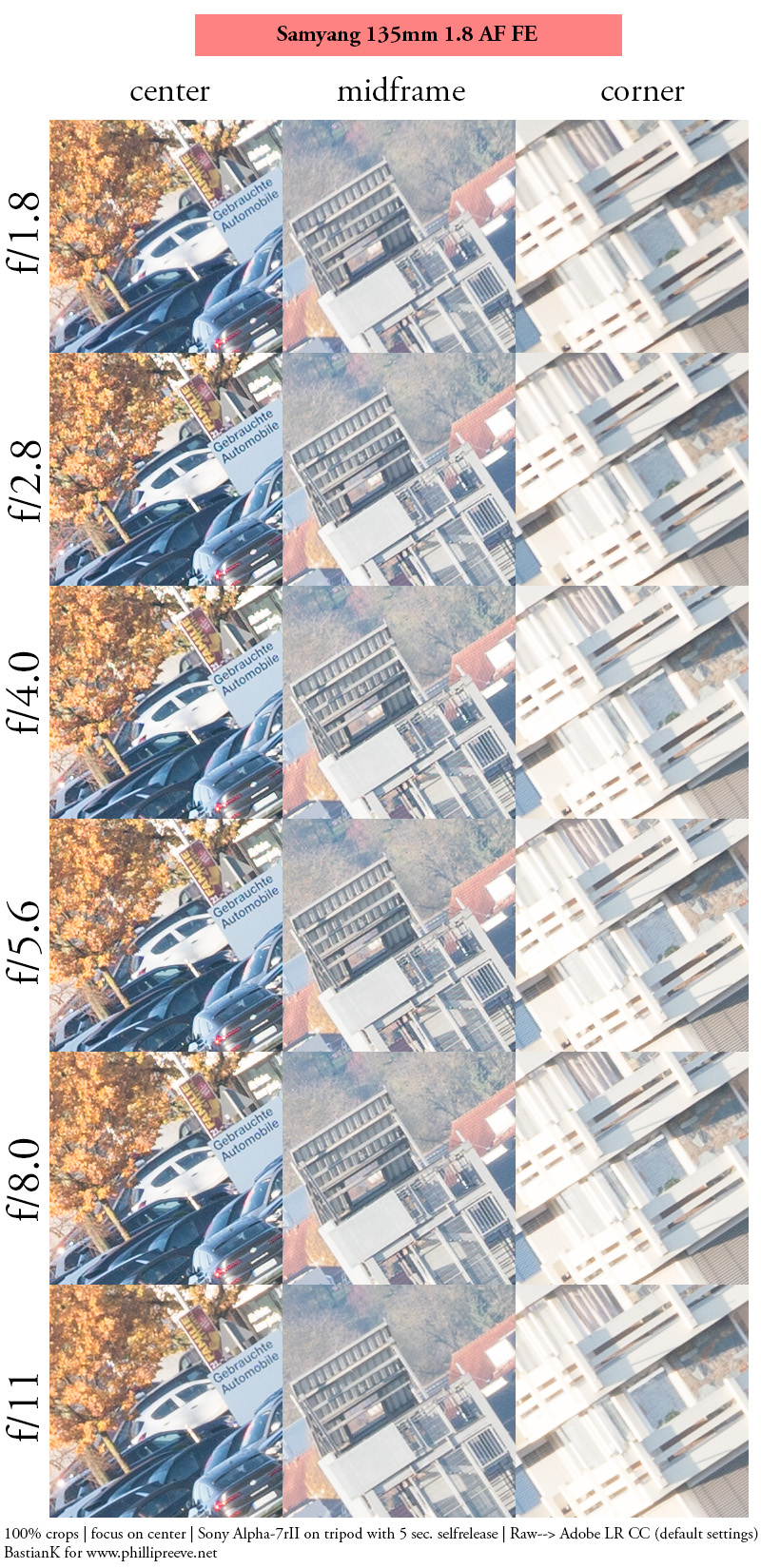
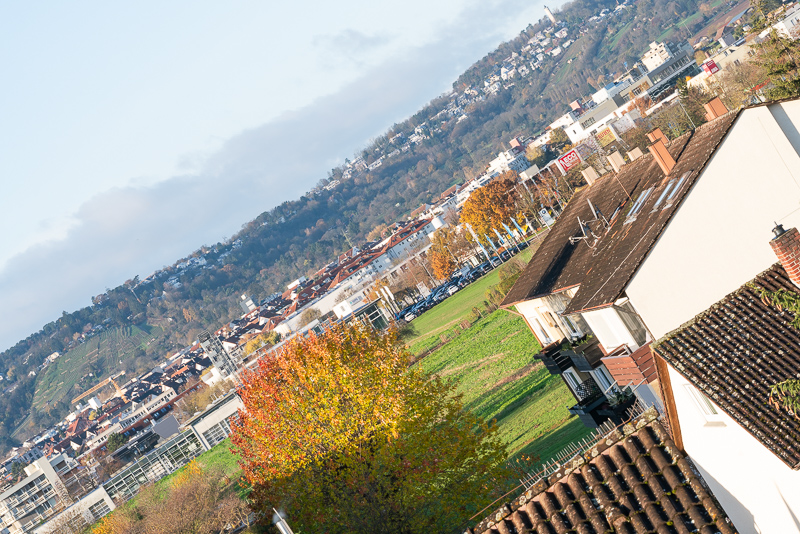
The MTF graphs didn’t lie. Already at f/1.8 this Samyang 135mm 1.8 AF shows a great performance. Center and midframe already look impeccable and the corners really good.
Without a direct comparison I cannot be sure if the Sony FE 135mm 1.8 GM actually performs better than this. The Viltrox 135mm 1.8 LAB does look a bit worse in the corners at f/1.8.
portrait distance (3.0 m, 42mp Sony A7rII)
For portraiture it isn’t so important how flat the field is, it is more interesting to see what the sharpness is like when focused at different parts of the frame to take field curvature out of the equation.

This is what I did here, I refocused for every shot and aperture to get the best possible result at different locations in the frame (center, inner midframe and outer midframe).
Focus distance was roughly 3.0 m and the circle of the dollar bill is more or less the size of a human eye.
f/1.8 <————> f/2.8
A very good performance from Samyang in this important category. It actually looks a bit better than the sample of the Viltrox 135mm 1.8 LAB I had.
I am not sure if the Sony FE 135mm 1.8 GM performs even better at these distances, but it really starts to be debatable here, if those differences are actually field relevant.
close (0.8 m, 1:4.0, 42mp Sony A7rII)
A maximum magnification of 1:4 is surely nice to have, as it allows for near macro shots. Performance is also good at these close distances, maybe a tiny bit better than what I have seen from the Viltrox 135mm 1.8 LAB.
Also here it has to be mentioned that most of today’s fast 135mm lenses offer similarly high magnifications.
Flare resistance
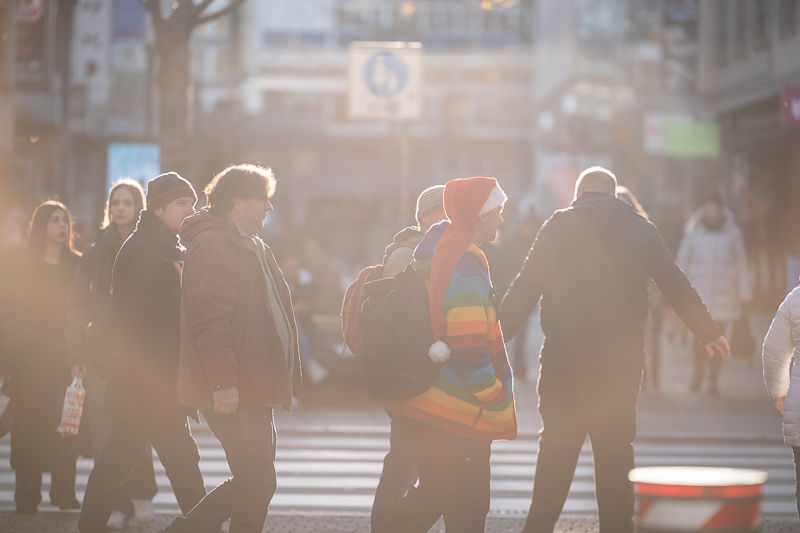
As always evaluating flare is a complex matter since you can get any lens to look bad if you push it hard enough and a slight change of scenario can affect results a lot.
What also doesn’t help: fast tele lenses haven’t been exactly great performers in this category.
In this scene, not many artefacts are to be found even though there is a high contrast between the sun and the dark tree branches in the foreground.
Stopped down some tiny ghosts can appear, nothing too worrisome.
The Achilles’ heel of these fast tele lenses is veiling flare though, and that is something I did encounter a few times:
Very rarely I also encountered this rainbow artefact, but in those cases I also wasn’t using the hood.
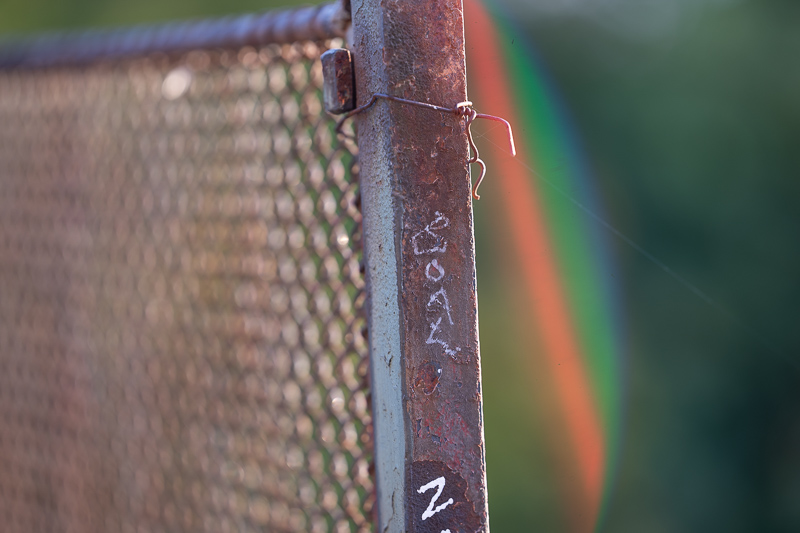
This is a category, where I think the Viltrox 135mm 1.8 LAB performs a bit better.
Coma
Samyang’s engineers have a thing for correcting Coma well and that is also what they did here. When it comes to modern fast 135mm lenses, this is not a stand out feature though, they all perform really well in this category.
Distortion

The Samyang 135mm 1.8 AF is almost completely free of distortion.-
Bokeh
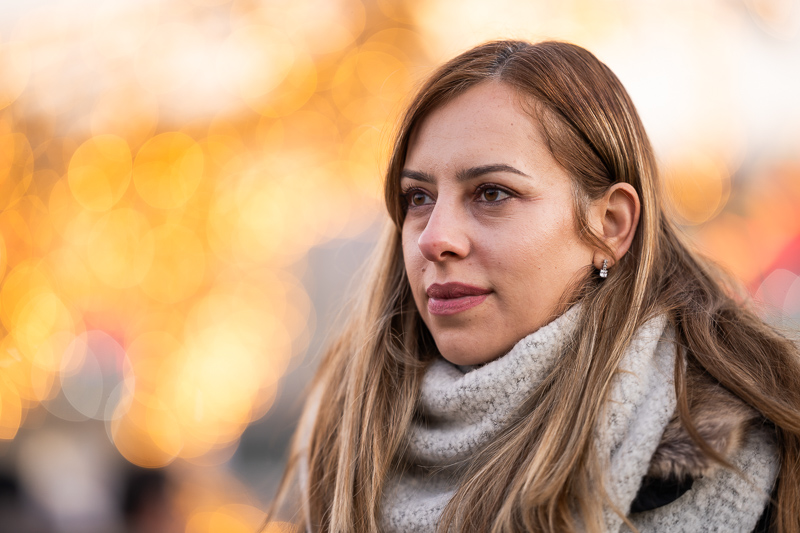
The performance in this category is what I was really curious about. Let’s see how it performs at different distances and also compared to its direct competitor, the Viltrox 135mm 1.8 LAB.
Close distance



Most of the modern fast 135mm lenses offer a maximum magnification of 1:4, which allows for near macro shots. This is something I really like compared to the fast 85mm lenses, that usually top out at 1:8.
This Samyang looks also really good at these distances, I see nothing I could complain about.
Medium distance



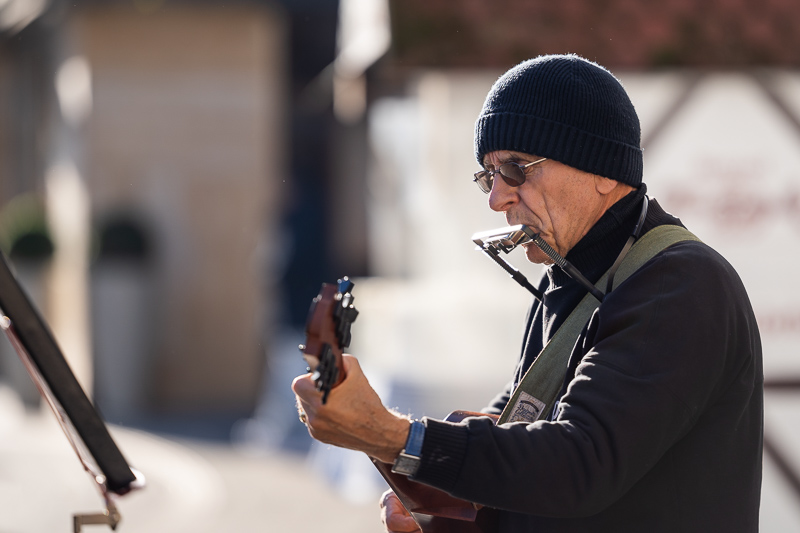
Also at mid distances the Samyang 135mm 1.8 AF looks really good to me, as backgrounds are rendered it a pleasing, unobtrusive way – even structured ones.
Long distance

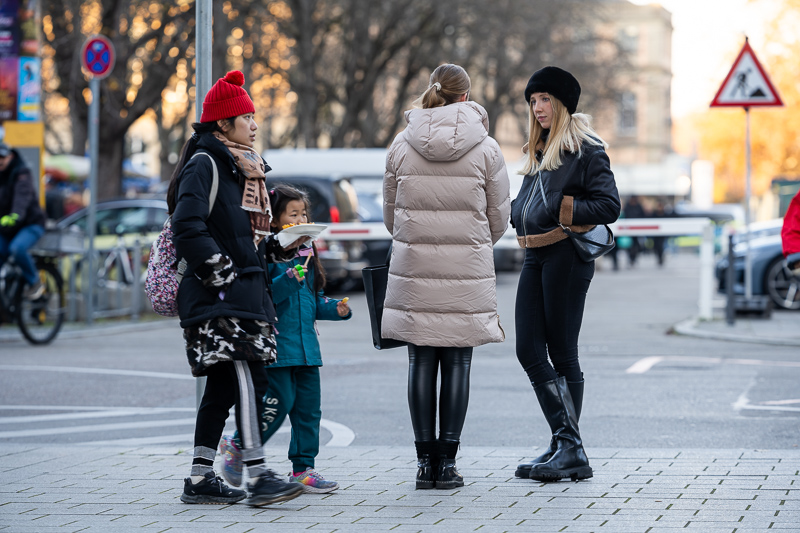

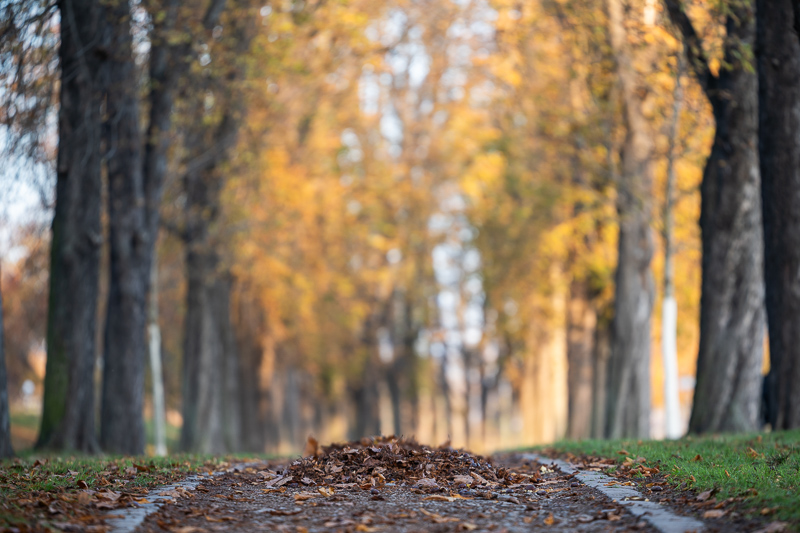
Long focus distances are always where things get interesting. The Viltrox 135mm 1.8 LAB did not convince me 100% here when it came to complex backgrounds (e.g. foliage). It seems to me the Samyang looks a bit better here, but let us double check that in a few direct side-by-side comparisons in the next section.
Compared to: Vitrox 135mm 1.8 LAB
Scene 1: Forest Mid Distance
Scene 2: Forest Long Distance
Scene 3: Forest Long Distance
Scene 4: Forest Close Distance
Observations
Generally, these two lenses create very similar pictures. So similar, looking only at the camera display flicking back and forth, I couldn’t even tell them apart. So we are really talking about nuances here.
The Samyang looks a tiny bit smoother to me in scenes 1 and 3, not a meaningful difference though.
In terms of resolution and contrast its a draw to me. Shot-to-shot variance and sample variation are probably a bigger influence factor than actual differences between the two designs.
From the bokeh crops in scene 3 we can see the Viltrox’ sligthly less optical vignetting, that potential advantage isn’t really visible in the other scenes though.
In scene 2 the Samyang created a big rainbow artefact not present in the Viltrox’ shot. Keep in mind I wasn’t using the hoods for either lens here and if I did that might have benefitted the Samyang.
Let’s be honest here, if it wasn’t for that rainbow artefact in scene 2 which gives away the picture was taken with the Samyang, I wouldn’t be able to tell which picture has been taken with what lens. And if you told me, you would be able to, I surely wouldn’t believe you. I am not sure I ever did a comparison of two lenses that look so similar.
Sunstars
Samyang decided to go for 9 rounded aperture blades with this lens and the aperture diaphragm is old school Samyang, meaning sketchy sunstars with uneven lengths.
This is mainly a portrait lens, so for most people that shouldn’t be much of an issue.
There is one more thing though, at f/1.8 this lens creates strange halos, I have never seen something exactly like that.
If you want to learn more about this topic have a look at this article.
Chromatic aberration
lateral
I did not see any lateral CA that I could show you here. The lens does feature a built-in correction profile which is automatically applied in Lightroom though.
longitudinal
The modern fast 135mm lenses do really well in this category and the Samyang is no exception, also here I can hardly find any bokeh fringing. If there was an Apo tag on this lens, it would be well deserved.
When it comes to purple fringing the situation is similar. However, we do again see that weird halo at f/1.8.
Most of the other fast 135mm lenses do really well here and show a similar performance, e.g. the old manual focus Samyang 135mm 2.0, Viltrox 135mm 1.8 LAB, the Zeiss 135mm 2.0 Apo-Sonnar and also the Sony FE 135mm 1.8 GM.
Conclusion
good
|
average
|
not good
|
Prior using this lens, I heard a lot of good things about it and for good reason. Samyang’s engineers put together a really compelling lens here, where it is hard to find actually meaningful flaws with.
Bokeh is very nice, sharpness is good, pretty much all aberrations are corrected well. No need for a lengthy conclusion here.
The only thing that caught me by surprise are those weird halos that can appear around point light sources at f/1.8. I also checked with other owners of this lens and their samples show the same behaviour, so it does seem to be caused by this lens’ design rather than sample variation. It isn’t something you will encounter often, so I am pretty sure most owners didn’t even come across it (yet).
Still, considering its very fair price and its low weight this is a very appealing long 135mm lens and I don’t see a lot of reasons to go for one of the pricier alternatives instead.
buy from amazon.com | amazon.de | ebay.com | ebay.de | B&H (affiliate links) for $799
Alternatives
All the modern 135mm 1.8 lenses are great, there is simply no dud among them. And even the last generation 135mm 2.0 lenses are great, you cannot really go wrong with any of these.
Nikon Z 135mm 1.8 S Plena:
Nikon came up with a name for this Z-mount lens, which they rarely do, and therefore means there must be something special about it and in this case it is the very low amount of optical vignetting. If that alone is worth the steep asking price is a very personal question though.
buy from amazon.com | amazon.de | ebay.com | ebay.de | B&H (affiliate links) for $2497
Sony FE 135mm 1.8 GM:
Sony’s own 135mm 1.8 is a nearly flawless lens. Sharpness and AF are top level. Without a direct comparison I am not sure whose bokeh actually looks nicer. If the best possible AF is important to you, this is the lens to get.
buy from amazon.com | amazon.de | ebay.com | ebay.de | B&H (affiliate links) for $1599
Viltrox 135mm 1.8 LAB:
I already compared these two lenses in pretty much all of the sections above. In terms of optical performance they are very similar. The Viltrox has slightly less optical vignetting, a bit better flare resistance and a different button layout, the Samyang is a whole lot lighter and also cheaper. I actually think, most people will be better off with the Samyang. The Samyang also worked with my Sony-E to Nikon-Z adapters, this wasn’t the case for the Viltrox when I tried (firmware updates may change that in the future).
buy from manufacturer’s shop (use the code “PRnet” for 8% discount) | Amazon.com | Amazon.de | ebay.com | ebay.de | B&H (affiliate links) for $999
Sigma 135mm 1.8 Art:
Sigma’s 135mm 1.8 is a lens still designed for DSLRs which makes it unnecessarily heavy and big compared to this Samyang 135mm 1.8 AF or the Sony FE 135mm 1.8 GM. I would only consider it if I was still using DSLRs.
buy from amazon.com | amazon.de | ebay.com | ebay.de (affiliate links) starting at $800 (used)
Sample Images


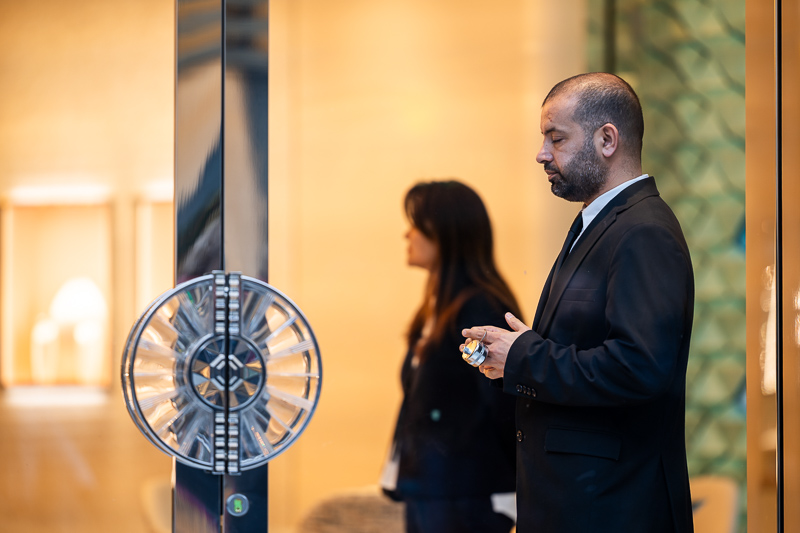

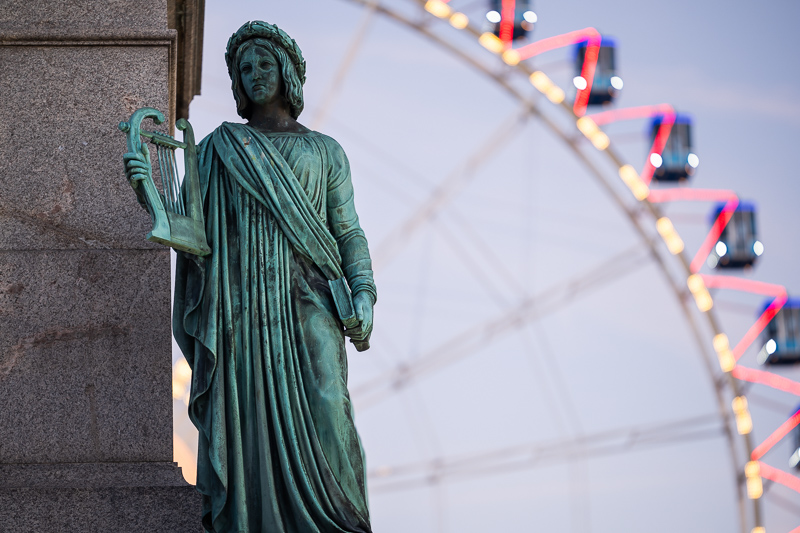
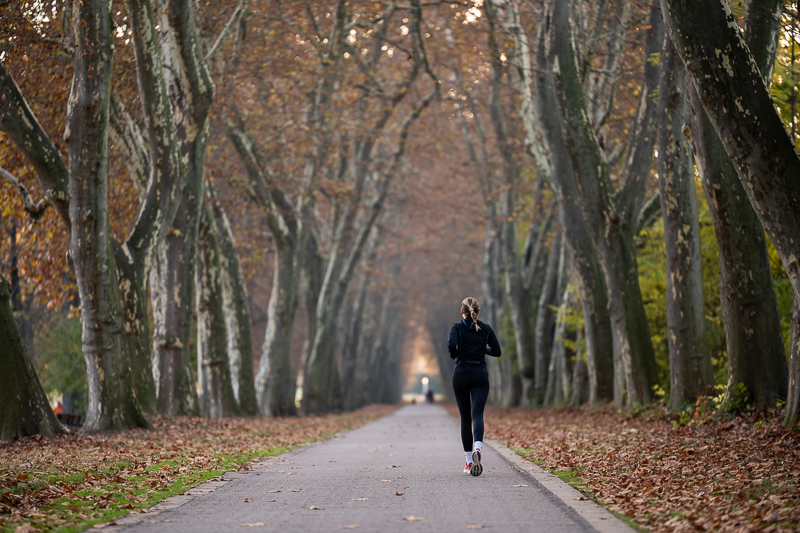
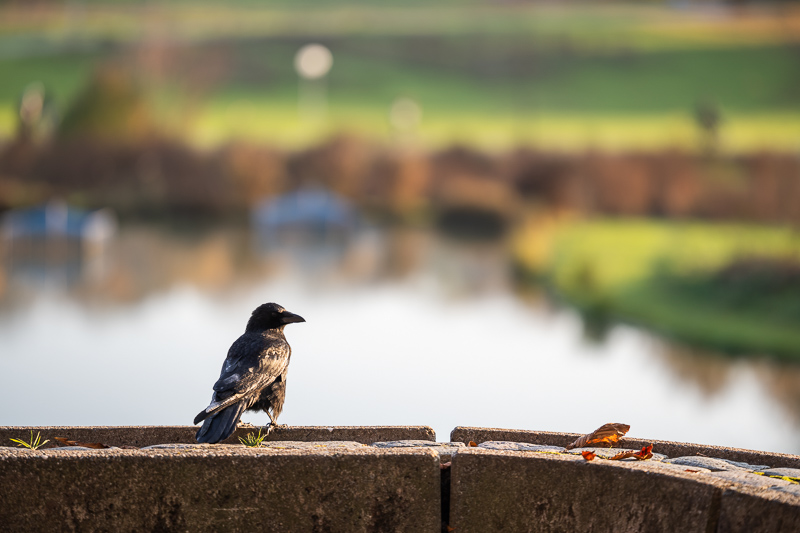
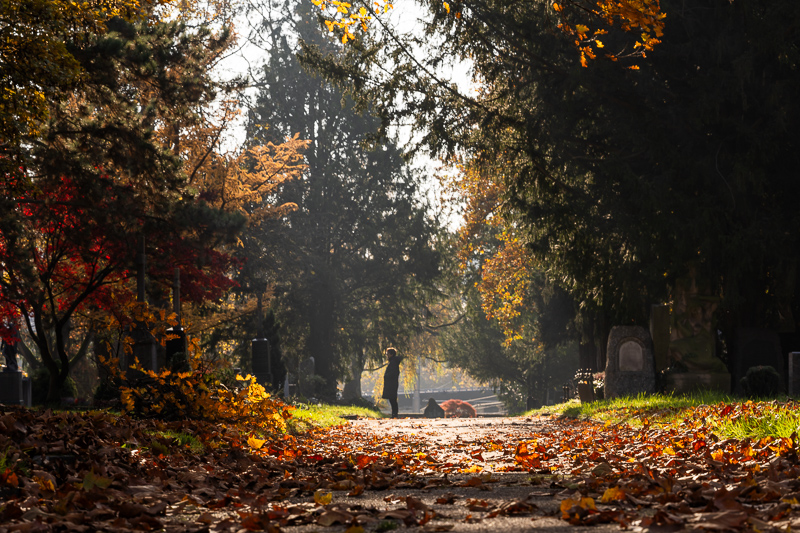
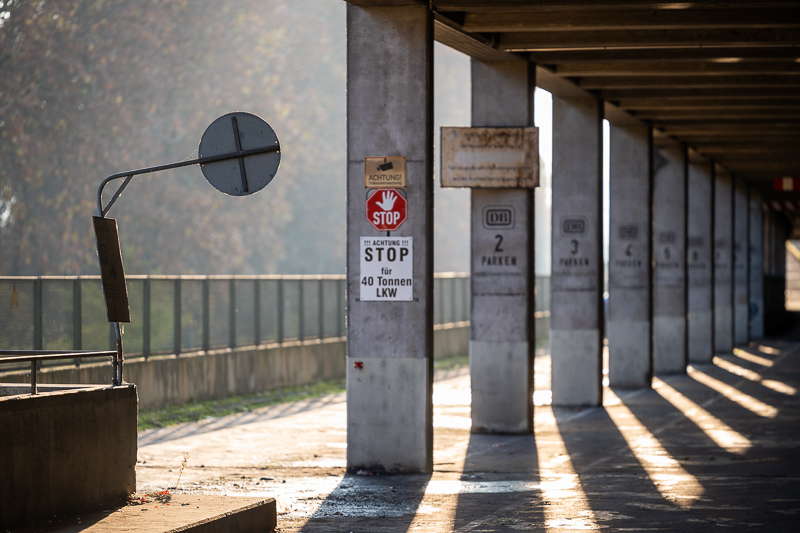
You can find many of the sample images in full resolution here.
Further Reading
- Guide to 85-135mm Portrait lenses
- Review: Samyang 10mm 3.5 XP
- Review: Samyang 24mm 1.8 AF FE
- Bokeh explained
- Reviewing Lenses isn’t really worth it
Support Us
Did you find this article useful or just liked reading it? Treat us to a coffee!
![]()
![]()
![]() via Paypal
via Paypal
This site contains affiliate links. If you make a purchase using any of the links marked as affiliate links, I may receive a small commission at no additional cost to you. This helps support the creation of future content.
Latest posts by BastianK (see all)
- Review: Voigtländer VM 12mm 5.6 Ultra-Wide-Heliar MK III - August 31, 2025
- Review: Nikon AF-S 85mm 1.4G - August 23, 2025
- Review: Irix 11mm 4.0 Firefly - August 16, 2025









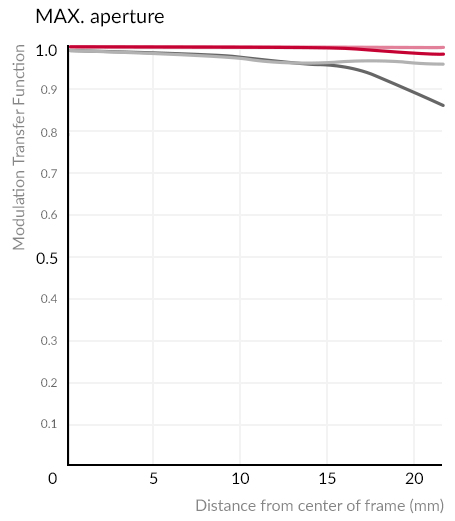
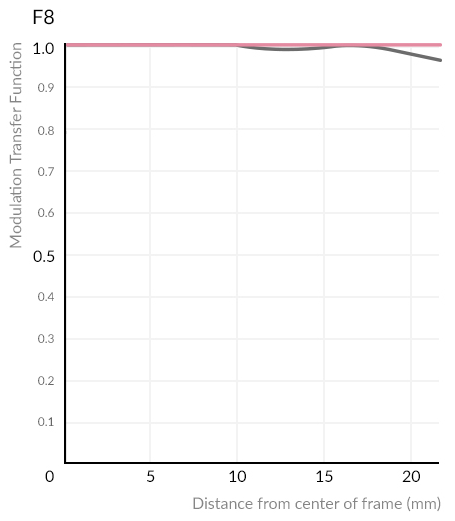
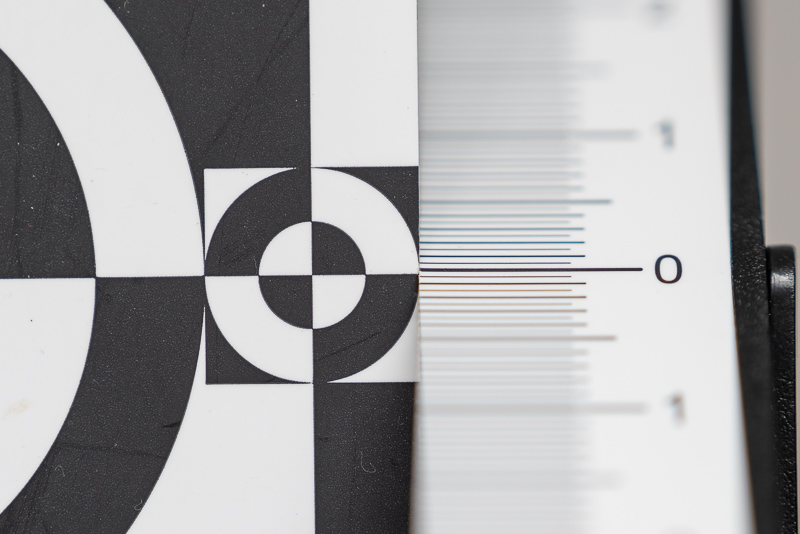
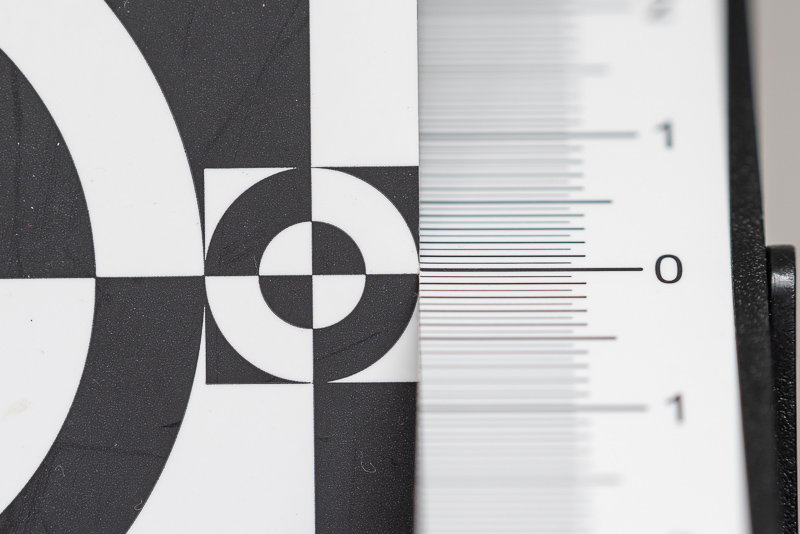
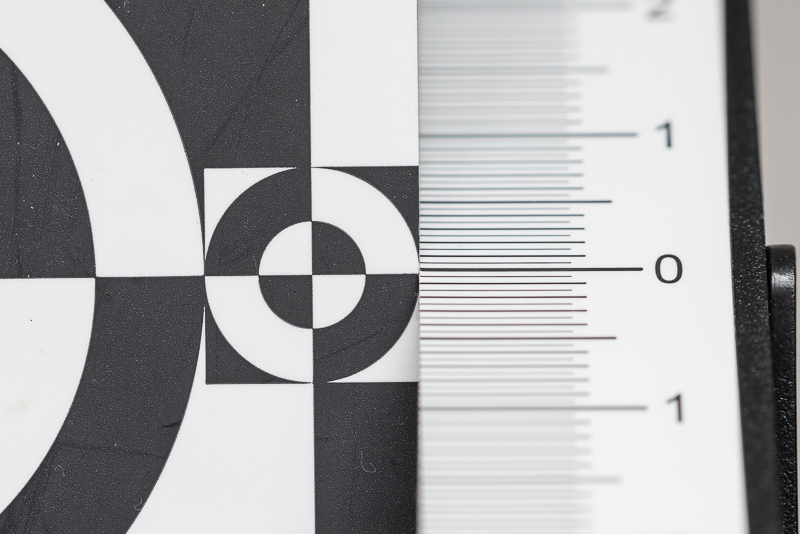






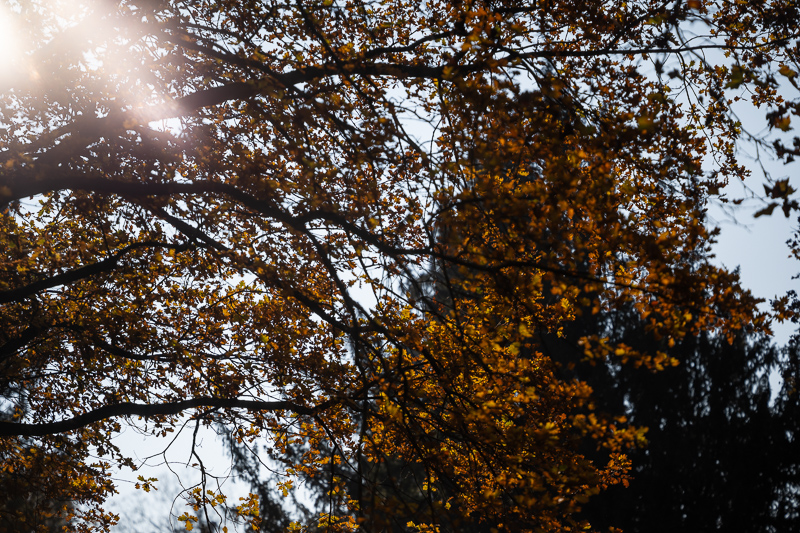
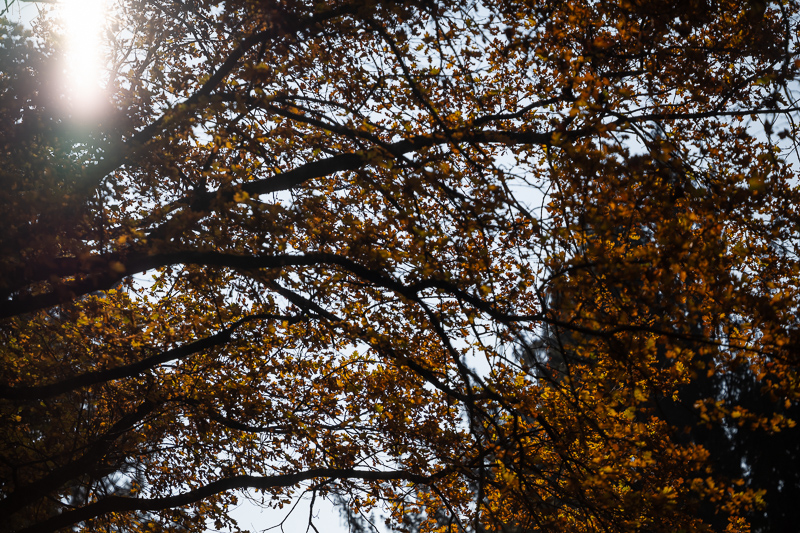
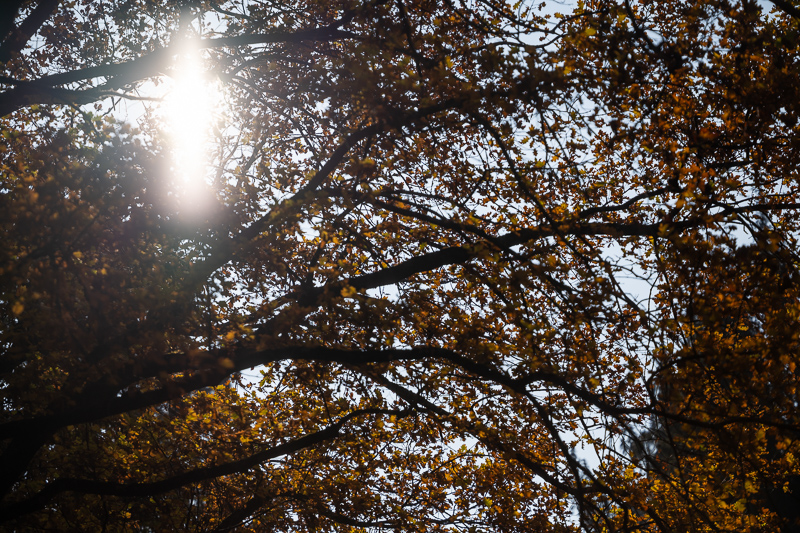
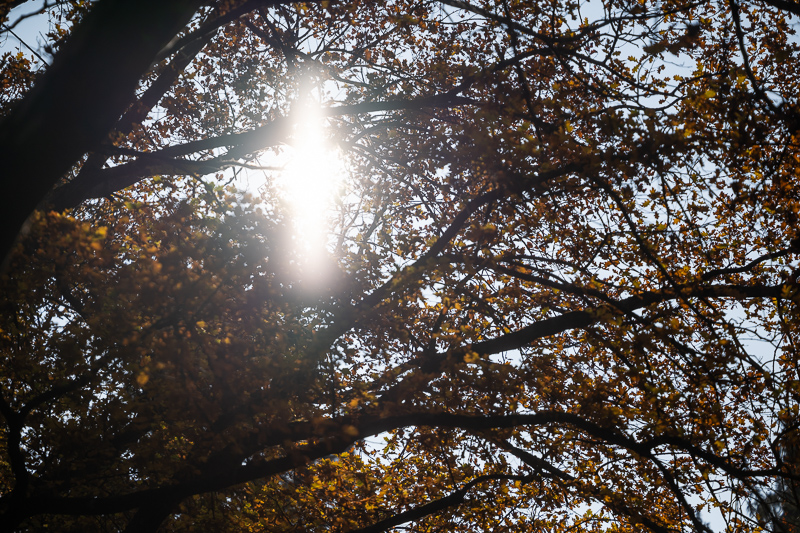
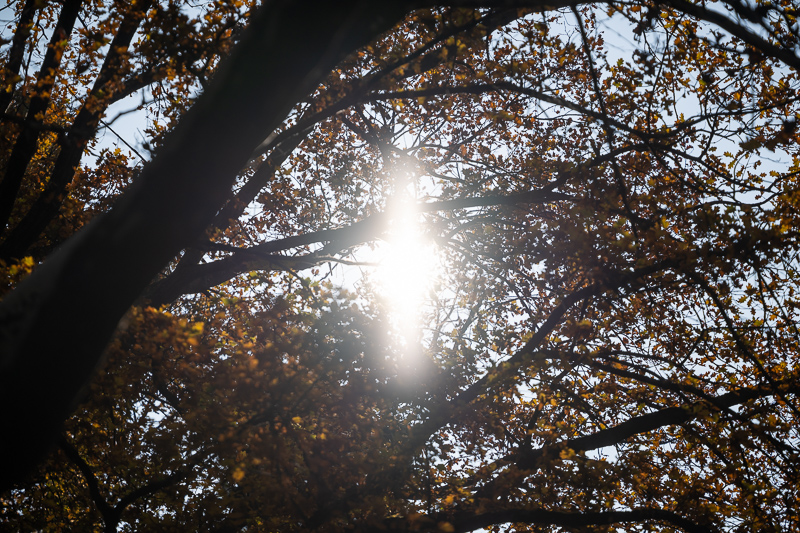
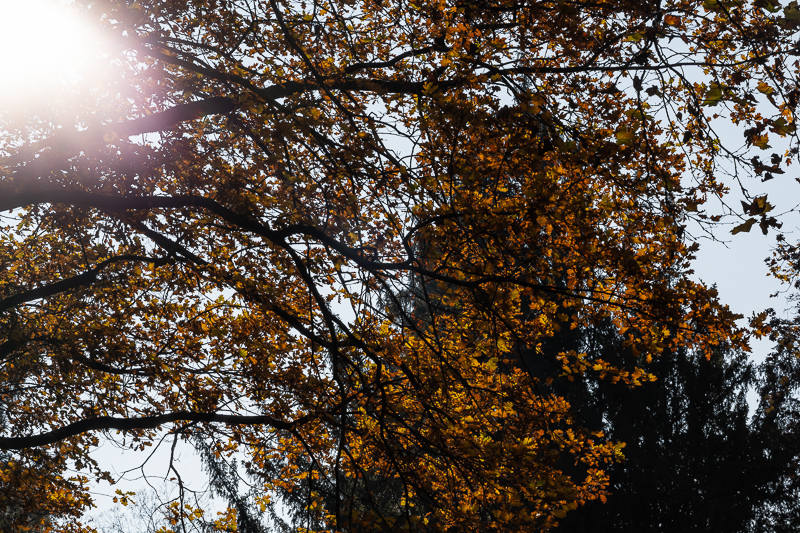
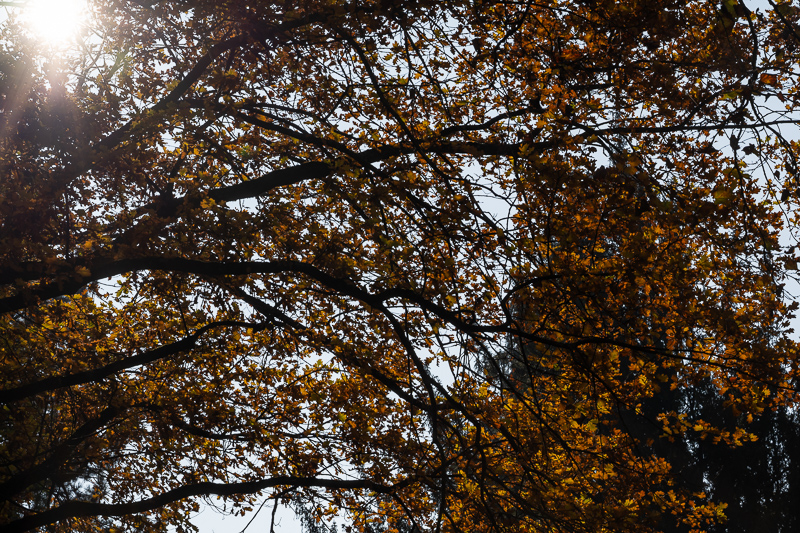
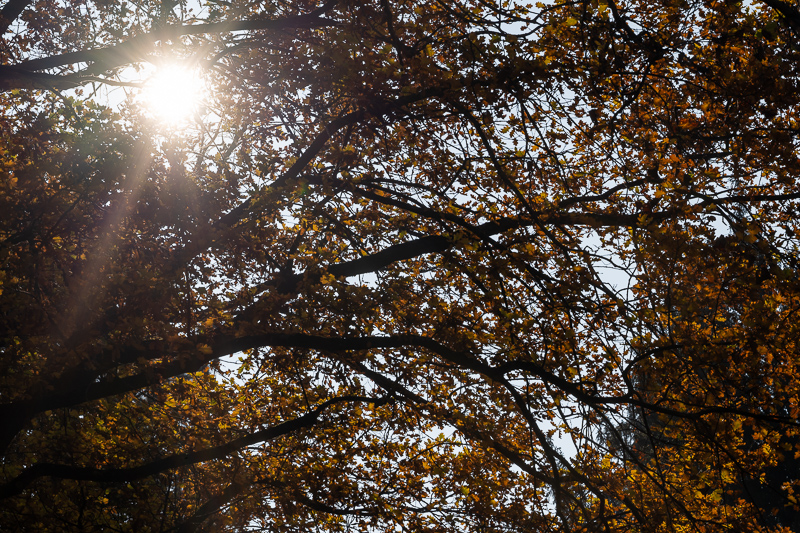
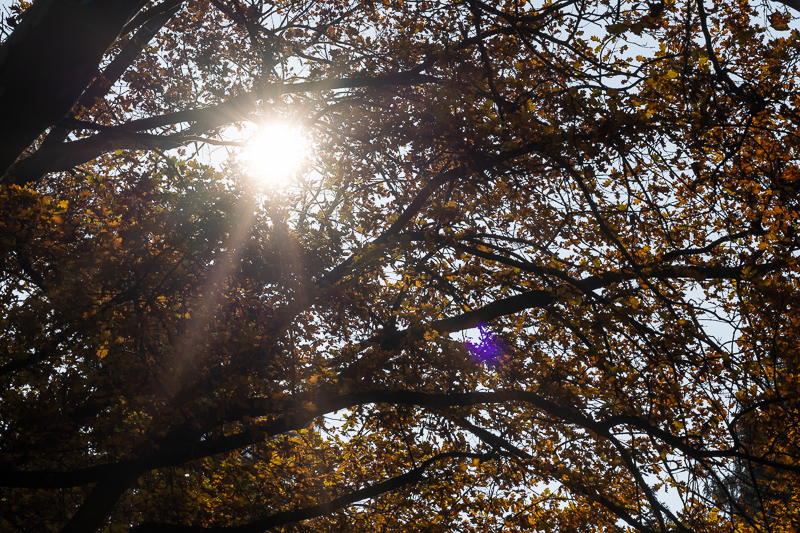
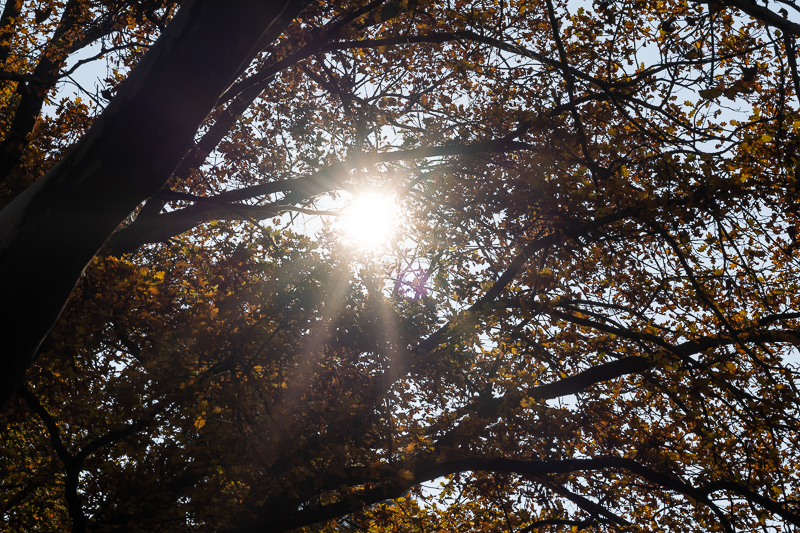
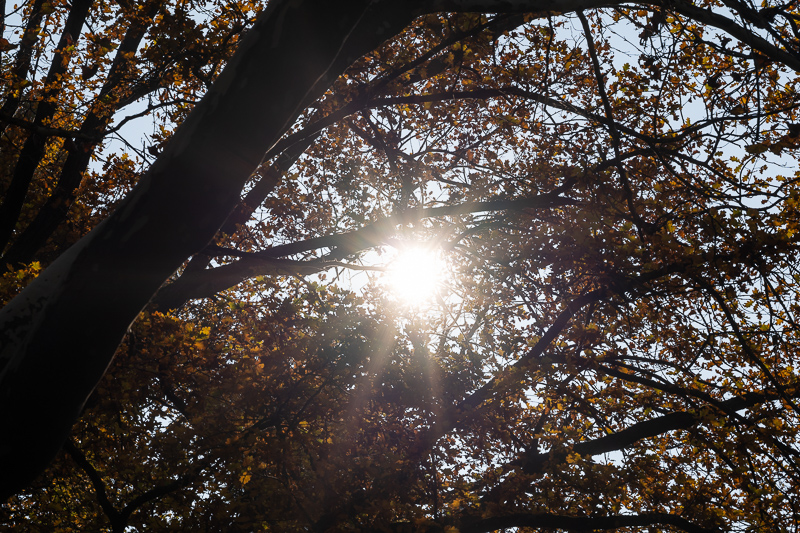


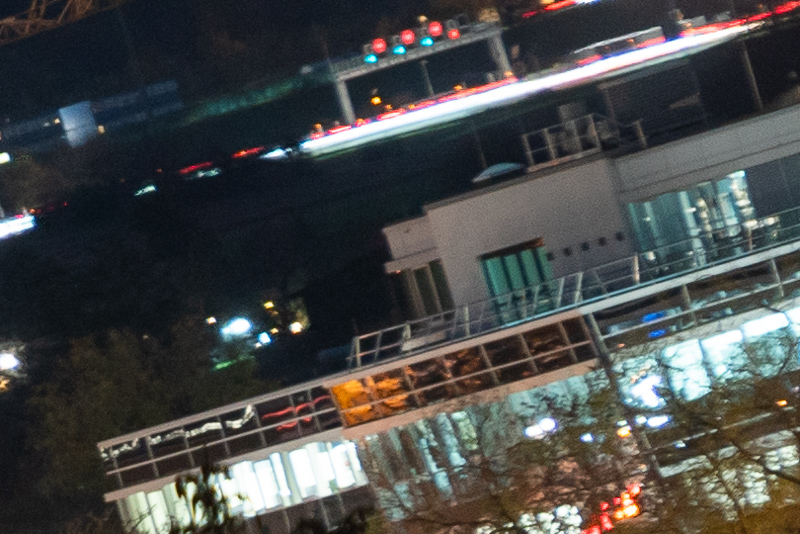
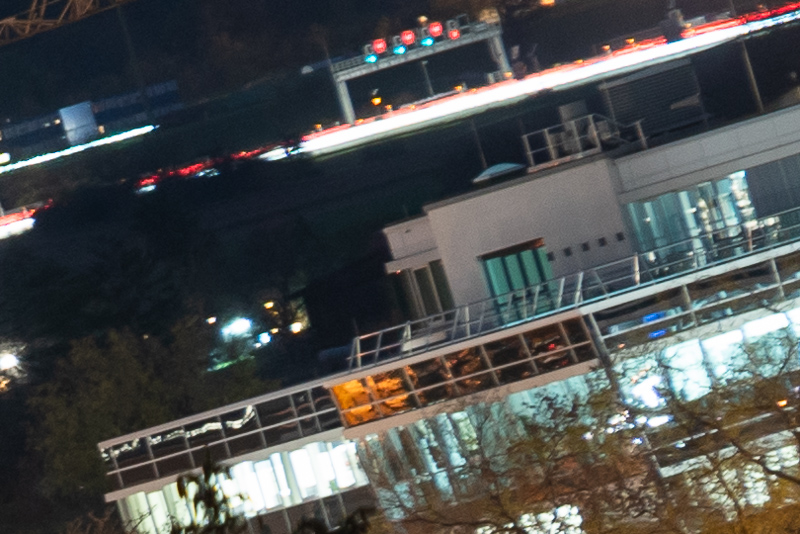
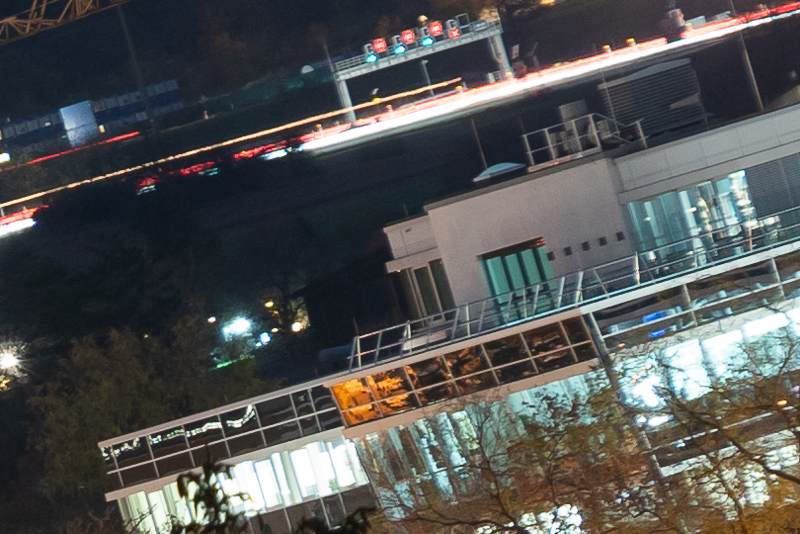
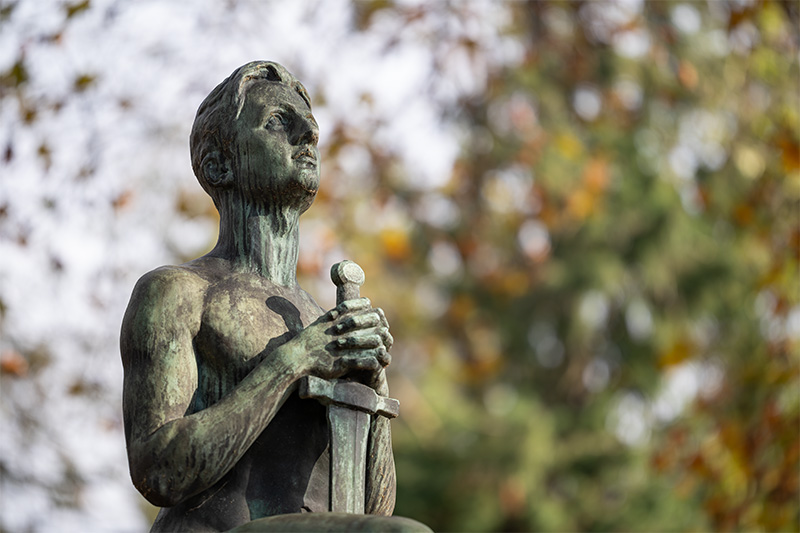
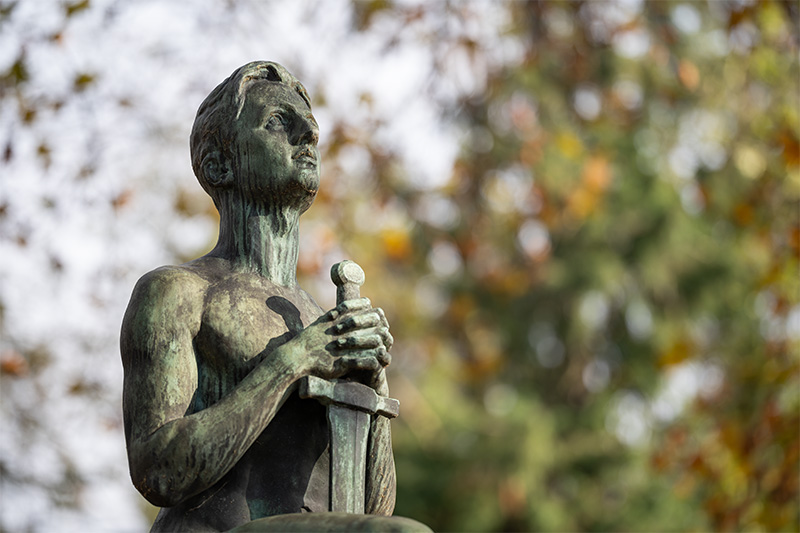
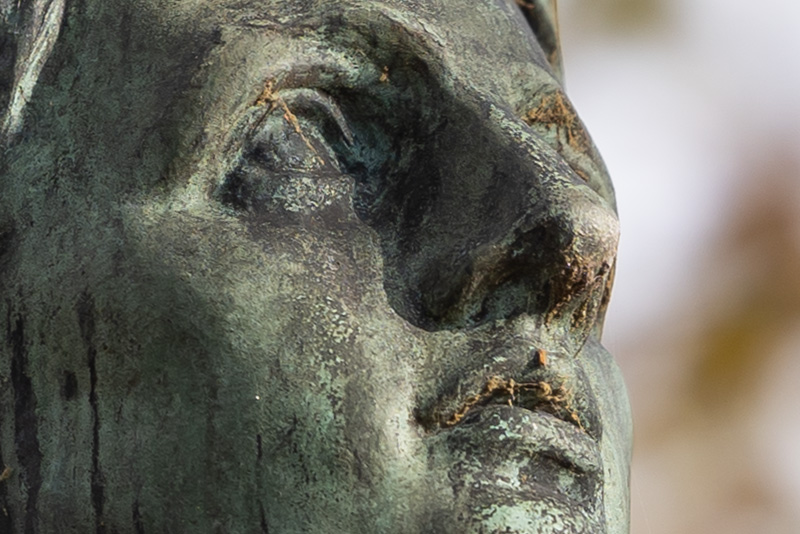
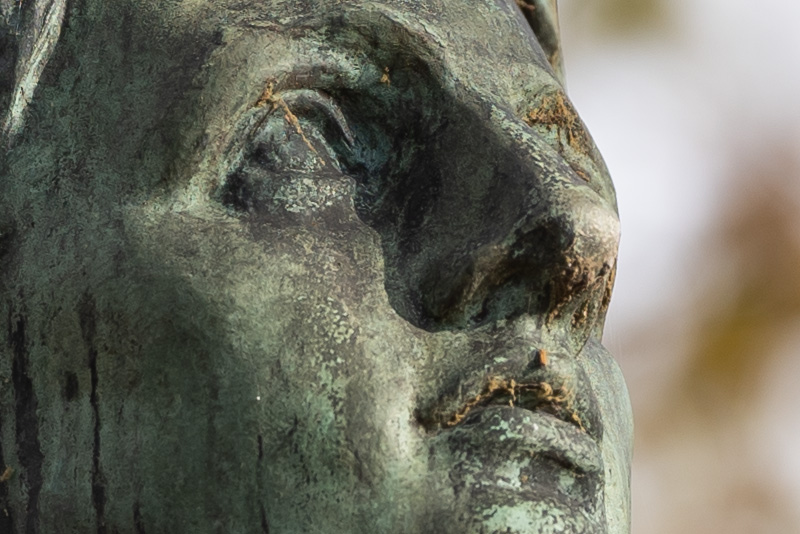
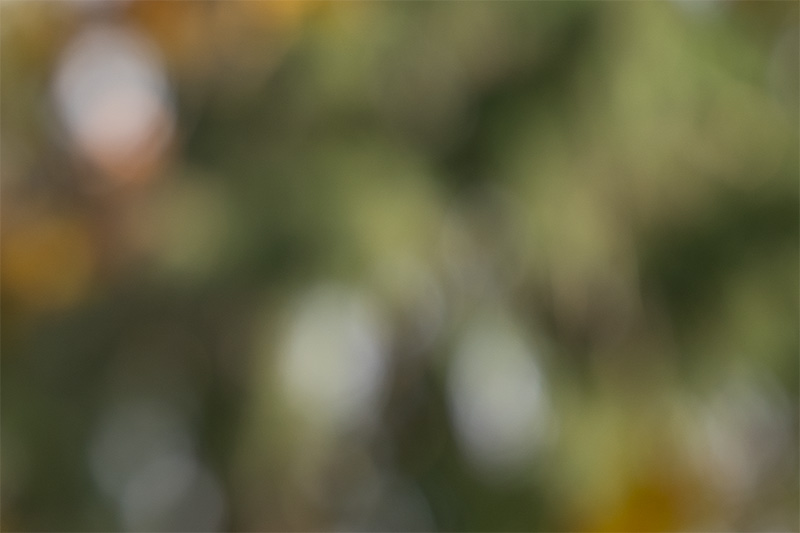
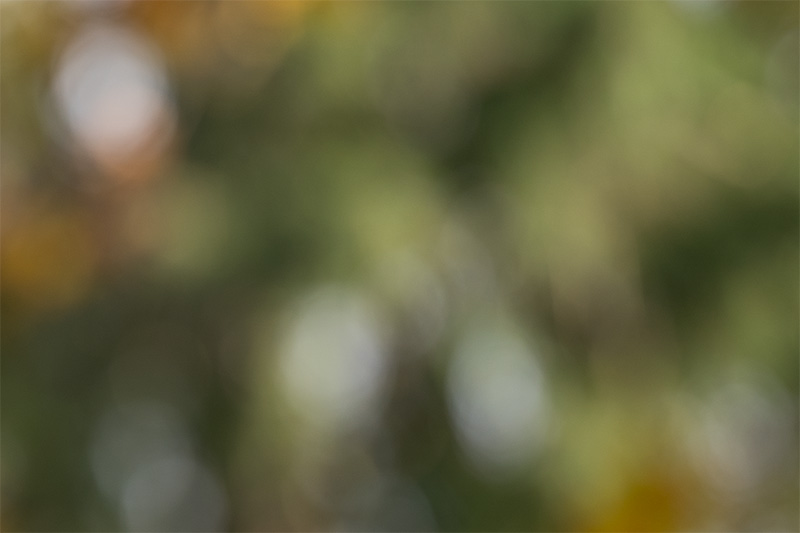


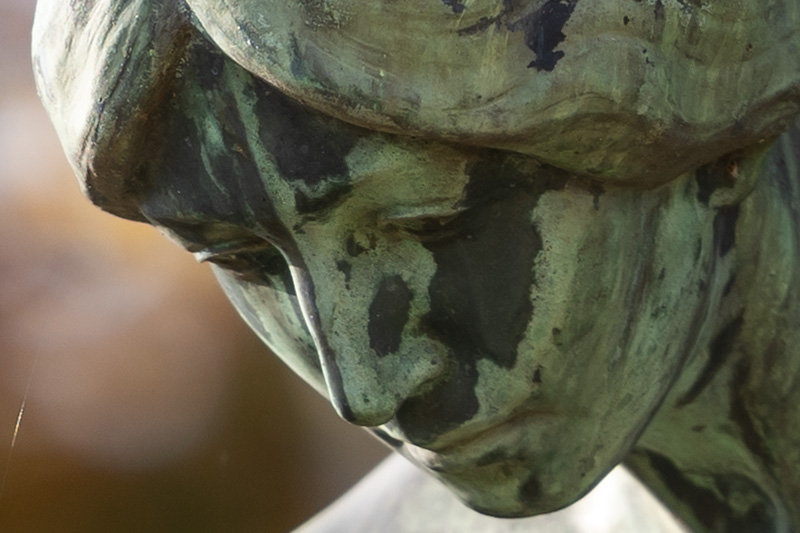
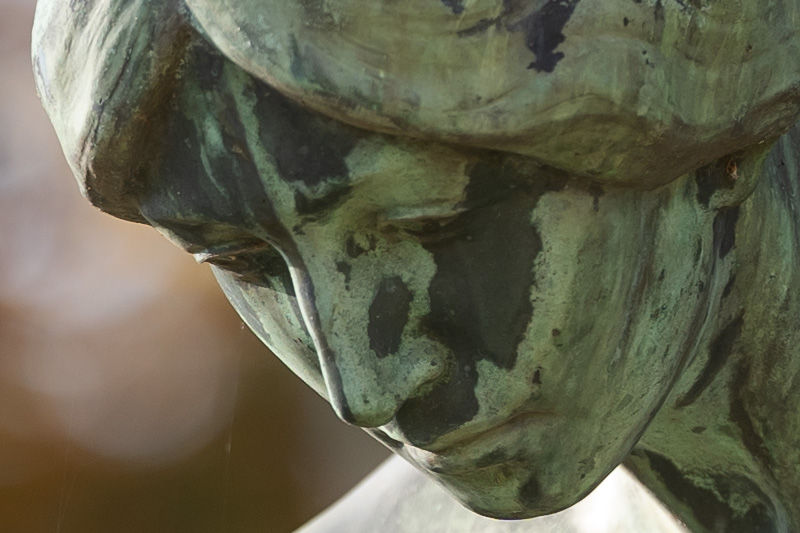
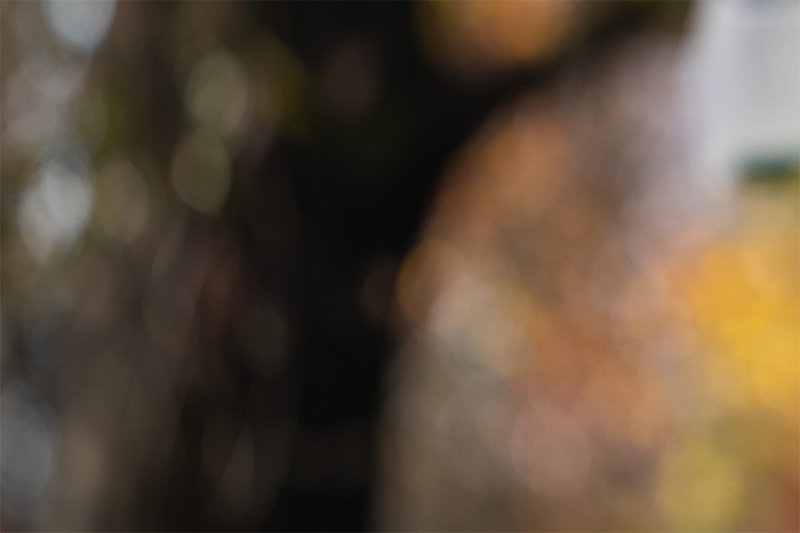
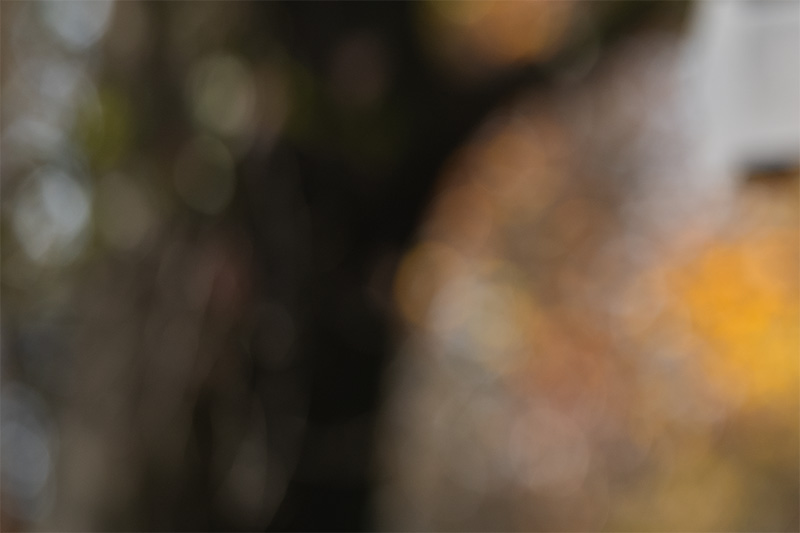
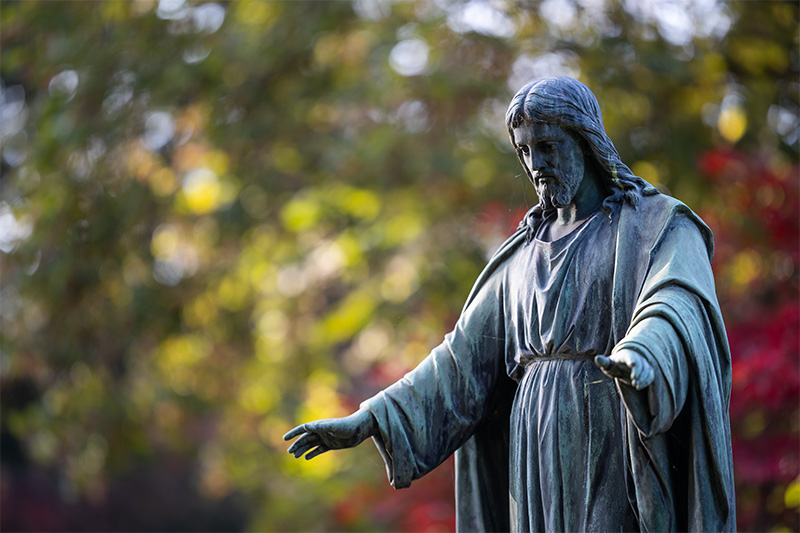
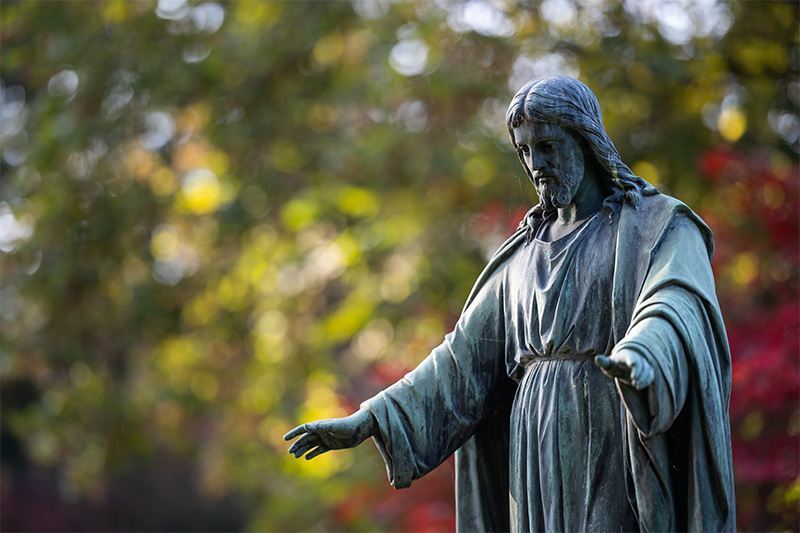
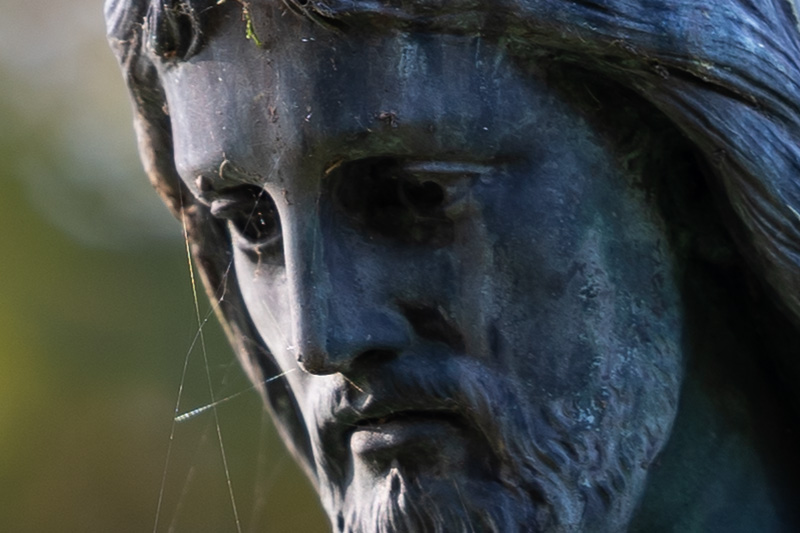
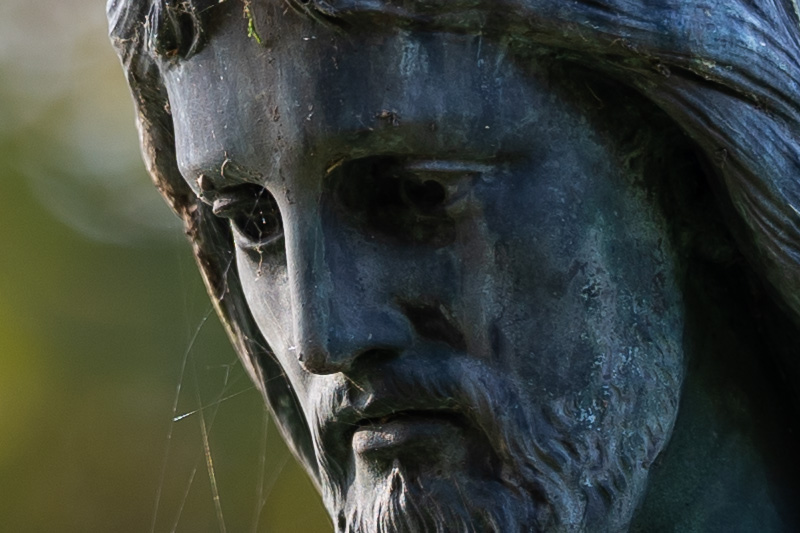
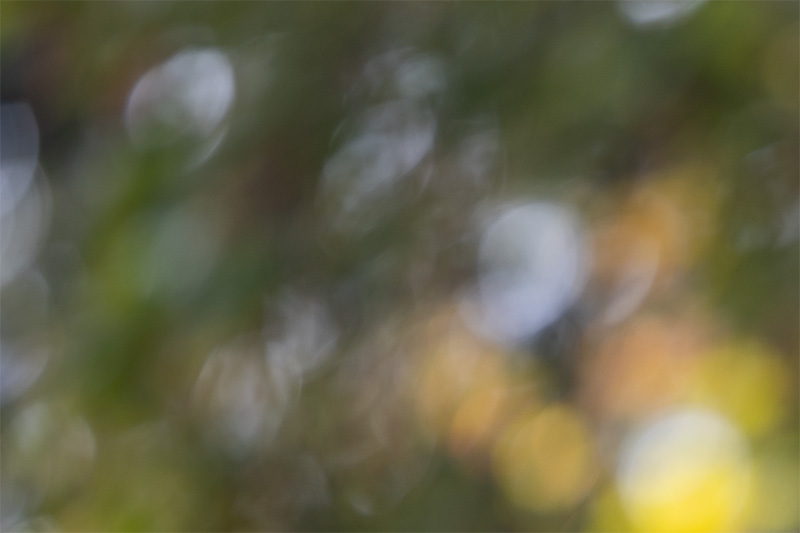
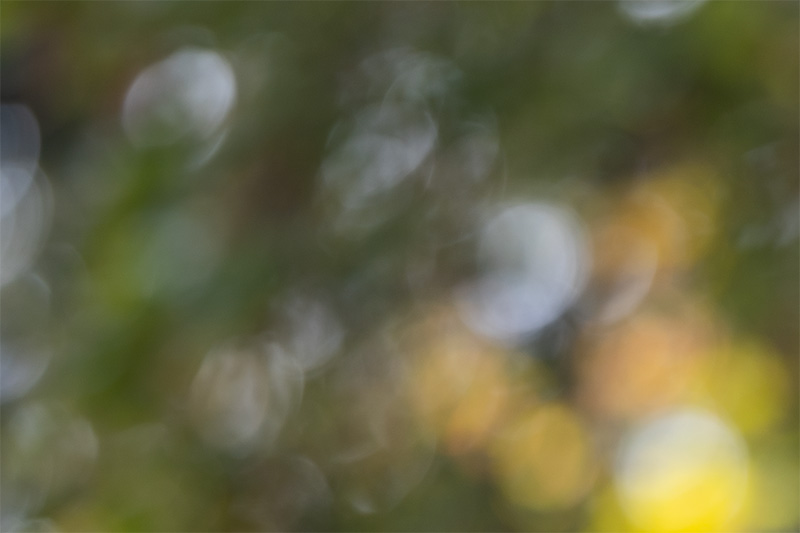
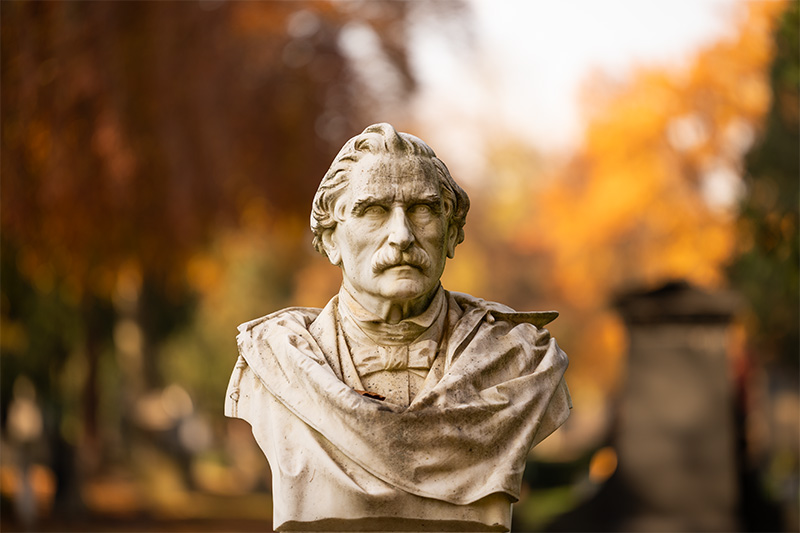
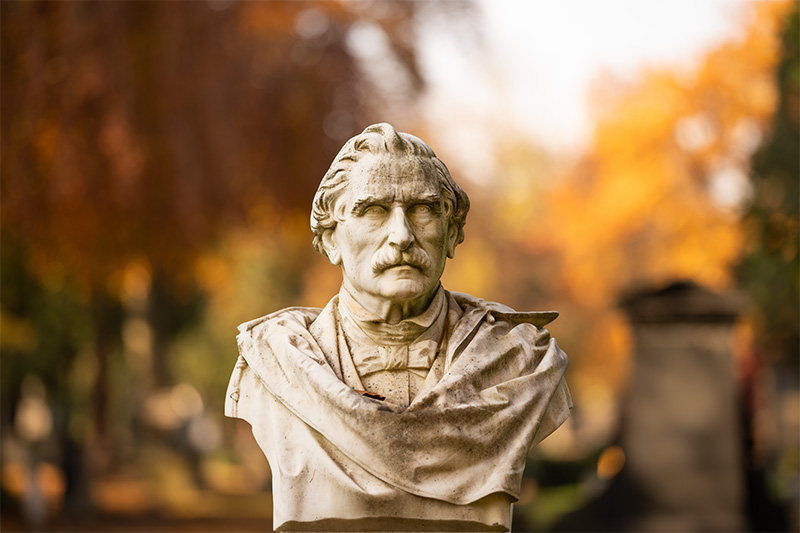
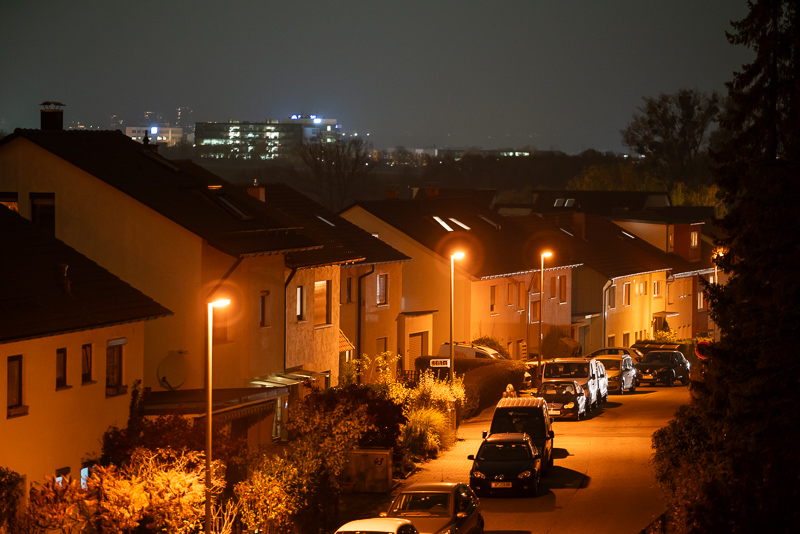
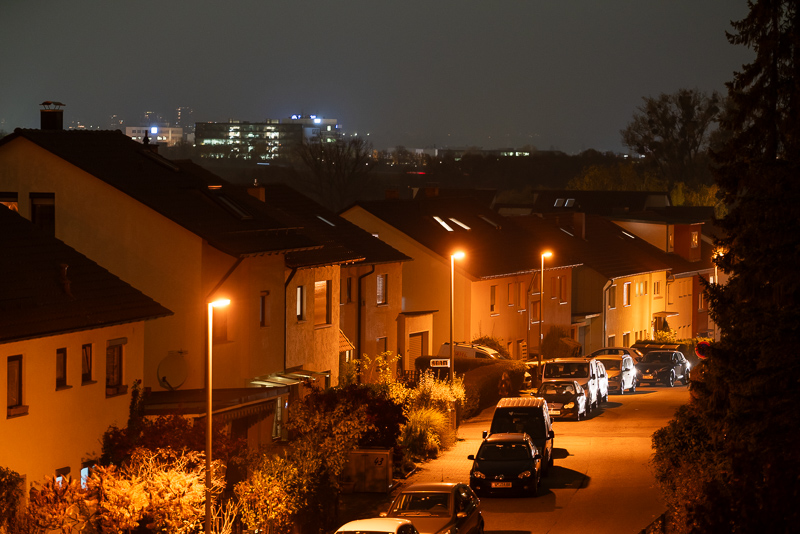
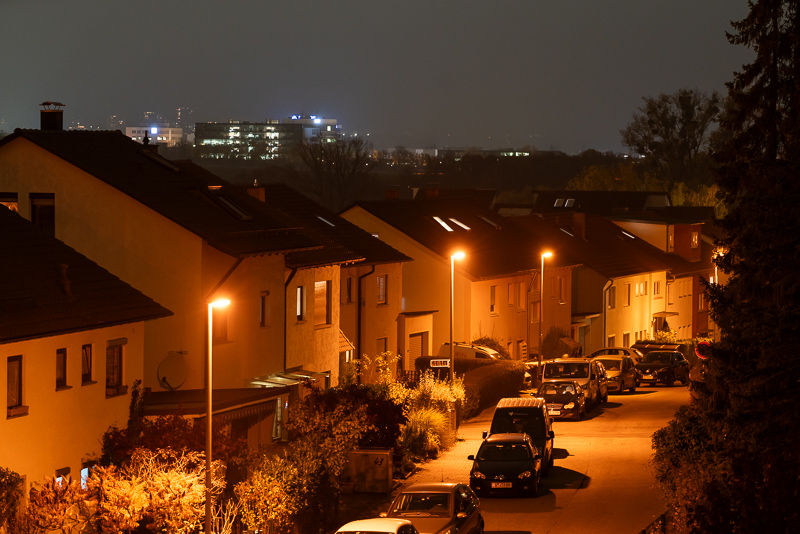
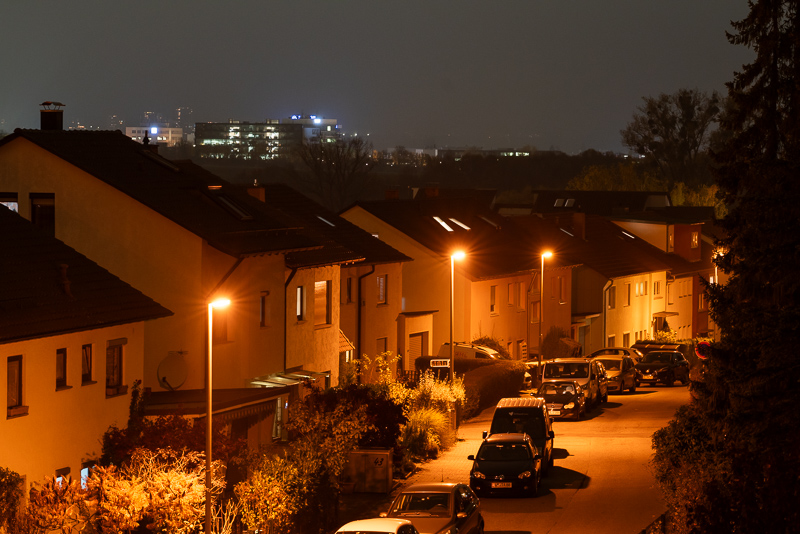

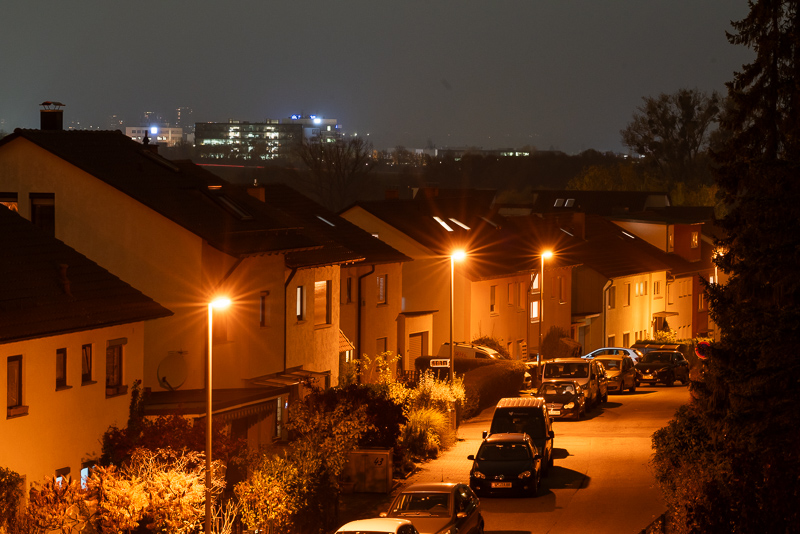
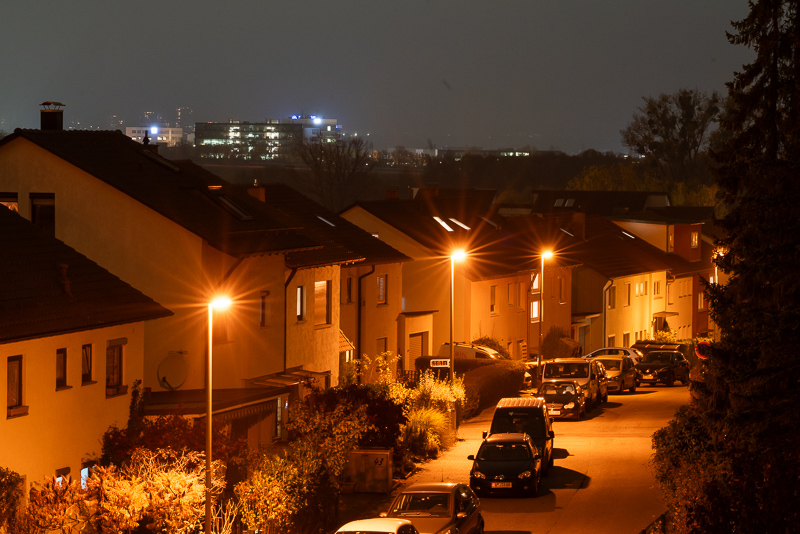
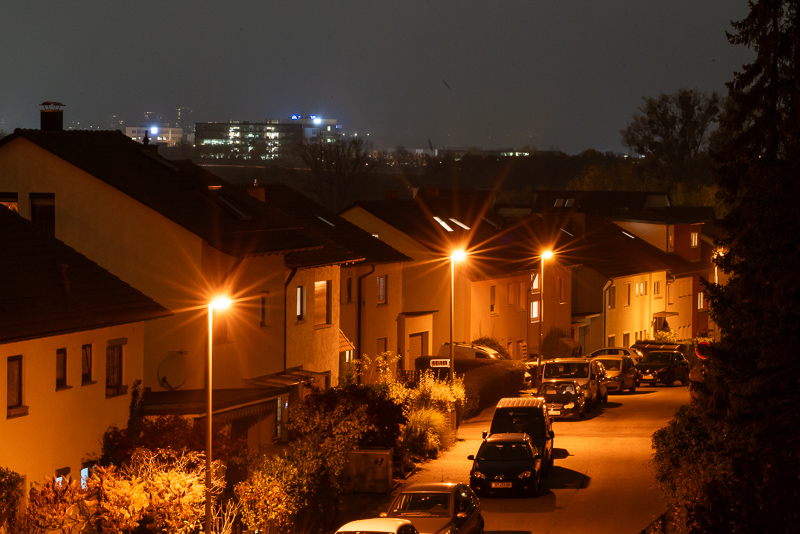
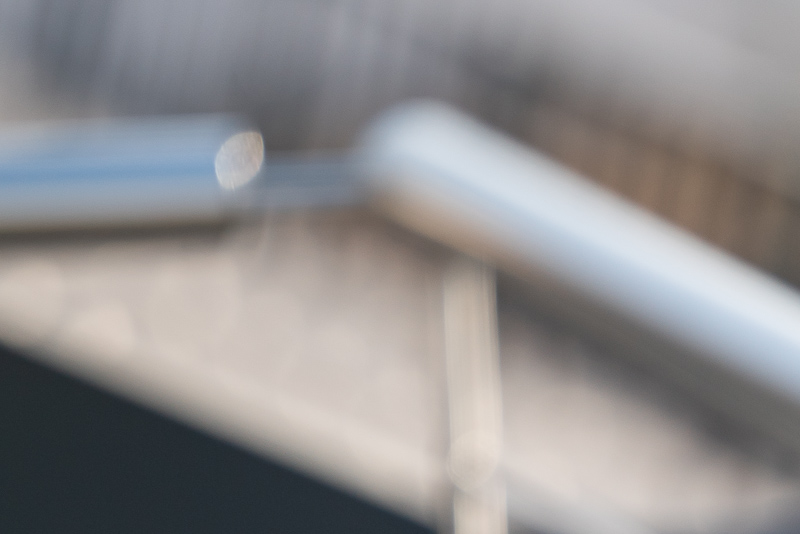
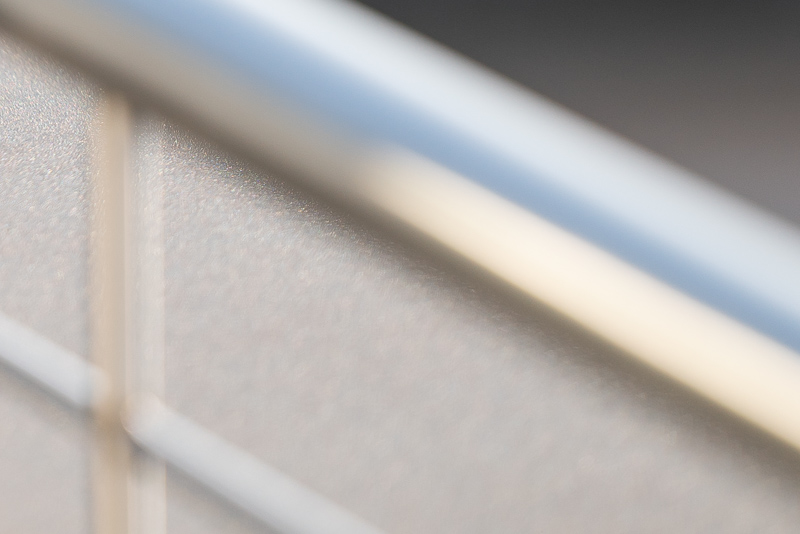
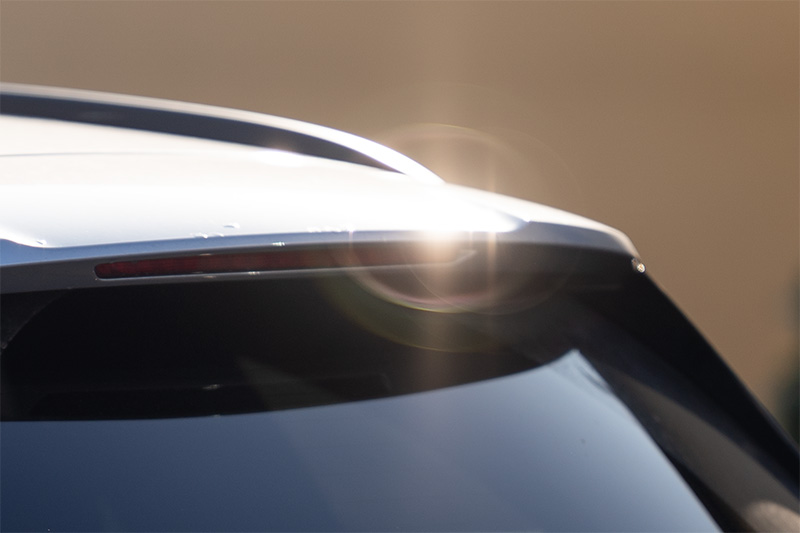
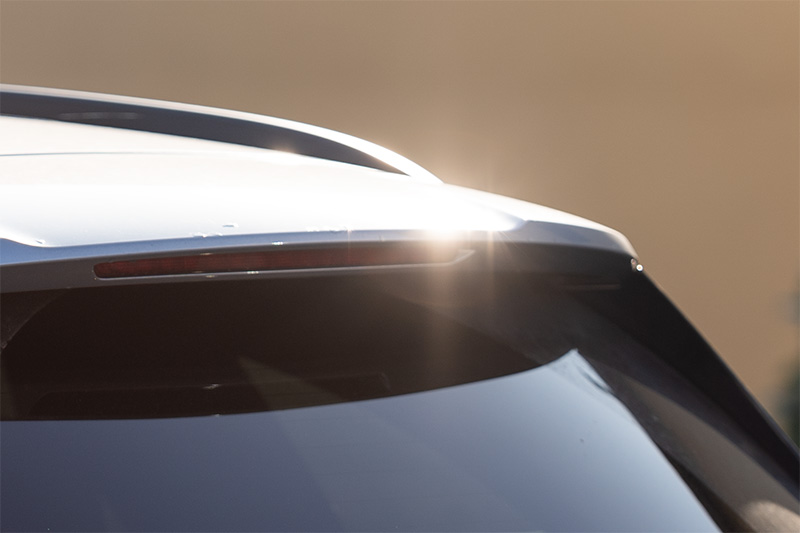
I have one: indeed the focus could be better, I do have the round halo’s sometimes and it’s quite big. But if I drag it around all day it always delivers. Love it.
I forgot: the copy Lenstip tested seemed worse, so that is something to be aware of if you buy one.
Bastian, how do you like 135mm as a focal length? It seems you used EF 135 L in the past, and switched to 85 GM. Thanks!
For e.g. weddings or reportage in general I find it too long for my taste. I prefer 85mm, 105mm also works, 135mm bit too long.
Also depends on the other lenses I am using though. Wouldn’t use 50 and 85 together, so if 50 was my main focal length (it isn’t, I am more of a 28 or 35mm guy) would probably prefer 135mm.
PS: you kept good track 😊
Hey, you found out how great value this lens is. I don’t see how any Sony user would pick the Viltrox over this one. The weight is a deal killer considering the image quality similarity.
Can’t argue with that…
AF performance.
Those who shoot fast moving things reported, that the AF of the Viltrox is way better than the Samyang. Both faster and more consistent
I had the Samyang and sold it because of the AF. There was rather bad hit rate for live concerts, even after all the lens firmware updates.
I got Sony 135 GM with a discount instead. I actually liked the Samyang output better, it looked more contrasty by default and the lens was lighter. But when it comes to the AF, it is a night and day.
Thanks for the thorough comparison with the Viltrox! I knew all these 135s were great but I was honestly not expecting their rendering to be so close… First time I used the SY I had the limiter on 1.5m->infinity and couldn’t figure it why I wouldn’t focus closer on flowers, heh, took me a while to realize too even though I’d bought it in part for the 0.25x magnification.
Knowing you took some sample shots without the hood (and generally didn’t see too much difference), I don’t feel as bad for leaving it behind most of the time, just adds too much bulk around a lens that I can otherwise throw in a 6L sling with like a 35GM & CV21. Still wishing for a slower/smaller modern 135mm alternative (lighter/cheaper than the Batis).
super happy to finally see your review. It’s CA correction (LOCA) mostly could be considered APO but if you do A to B with Voightlander 110mm, you will notice some color fringing that is still absent on the crazy Voigtlander.
Despite this, I find Samyang 135mm a better close up lens if I’m not actually in need of magnifications greater than 0.25 and it is of course the better portrait instrument.
Really happy with my Samyang. It could perform worse and I would still recommend it for nonsports scenarios to most people because it’s the lightest of the bunch unless we count the slower Batis.
Tele lenses also suffer less from sample variation.
That light flaring at 1.8 only noticed at night when shooting with headlights usually. It can become really annoying but is rarely an issue in typical backlit scenarios
Its worth noting that AF is pumping on AI-based C-AF on newer Sony Models (a7Cii, a7Rv), hence needs newest firmware v4 through lens-station.
Its great deal lens, rendering many arguments about FF being expensive compared to other formats mute.
What you get with such a 135mmf1.8 can’t be matched by any other format.
To be fair, Viltrox’ 75mm 1.2 for APS-C isn’t thaaat far off.
Thank you for this additional advice on the bokeh (and the review/comparisons) with 113mm 1.8 eq on the Viltrox side..
I then checked the weight of the (APS-C) Viltrox : 784g measured with hood & caps…
This Samyang is very tempting for me, weight and bokeh wise. I’ve the MF version, a great lens, but the bokeh isn’t as “good” (ok, let’s say creamy), is it ?
I only shortly used the older Samyang 135mm 2.0 and from that time I cannot tell how their bokeh compares in detail.
I also have the Samyang 135 f/2 because I love MF and because its an amazing lens. Based on the photos I have made I think the Bokeh is very similar in expression to these samples, but its all subjective and not a direct comparison. As always its also dependent on the distance to the subject and background.
When looking at the lens diagram above, could element #3 (from the front of the lens) be the cause of the ring flare wide-open? Its edge profile has a double step and it’s a concave lens so the edge is thick (and it would be tremendously thicker if that extra thickness weren’t ground off). When you look head on at the front of the lens is there a bright-edged element that stands out?
Mr. Phillip, can I ask about the comparison of Samy 135/1.8 vs Mitakon 135/1.4?? Is there a big difference in output?
If you think there is a difference between a 50mm 1.8 and a 50mm 1.4 then yes.
If not: don’t bother and get the Samyang.
Hmm, clever 🙂
thank you very much 🙂
Have the Plena and the Batis 135. Both are essentially optically perfect for all practical purposes. Plena is pretty bulky, but balances well on Nikon Z9 and has some of the nicest bokeh. Can be bought at meaningful discount to list (about $200 off) if one negotiates. The Batis at f2.8 is quite light and also has impeccable image quality, making it a near perfect travel telephoto. Can be bought now at substantial discount to list.
I had the older manual 135 f/2.0 and really enjoyed it for portrait-work on my A7R II.
I traded it in against the 135 f/1.8 with AF later on and iam quite Happy. The AF could be better for sure – but for general portrait/people work i can’t complain that much.
If you find a good used copy – go for it!